|
In the film Andrei Rublev (1966) directed by Andrei Tarkovsky there is a curious scene, bizarre though valid and feasible from the point of view of a cinematographic work that was intended to be a historical reconstitution of the invisible, that is, the life of Andrei Rublev, the enigmatic Russian artist who lived in the fourteenth century, acclaimed as the most important and recognized icon painter in the History of Russia. When one character in the film, Kirill – another icon painter, extremely erudite and bookish – back to his monastery after years of wandering (recounted in episode 6, “Charity”), he realizes that a group of horsemen are being projected projected upside down on the wall opposite to the window which is closed by heavy shutters. Despite the barriers in the darkened room's window, there is space for the entrance of a tiny light beam, responsible for the marvelous and brief projection. A mediocre painter of icons, Kirill intuitively discovered the secret that afflicted the art from ancient Greece in this ad hoc camera obscura: the discovery of a method for capturing the movement of life, shaped in moving pictures. But that's not enough for Kirill to escape his own mediocrity – although inventive, he would never emulate/rival Andrei Rublev, a painter who did not need technical apparatus, narrow references in the tradition or prefabricated epiphanies. What Rublev did was paint a vision – the reality of the universe and the imagination – which only he had, something inaccessible to reproduction, even if a very sophisticated technique were employed. But humanity would pursue in devices and technological utopias the views articulated by Andrei Rublev (or Michelangelo, or William Blake, or Francisco de Goya, or Vincent Van Gogh, or Francis Bacon): cinema is perhaps the most stupendous result of this millennial effort that is both an attempt to capture the movement of life as a way to reproduce visions which we have access to only in the contemplation of great paintings or unique epiphanies.
It is curious that this intuitive discovery in Tarkovsky's film, although entirely fictional, is still achievable. The history and origins of the camera obscura are large, mythical and erratic, appearing in ancient China and in the Aristotle's researches, in the medieval Arab Engineering treatises and in the experiments by Anthemius of Tralles, the mathematician who designed Hagia Sophia in the days when Istanbul was still called Constantinople. The Ancestral Skyline of History has some fixed points with conventional nomenclatures, so in the context of what we usually call “Antiquity" and the "Middle Ages” – general names for didactic purposes – the knowledge protruded from much more complicated paths that nowadays, with unifying processes, databases, instant media, systematical records or patents. The obscure details and possibilities of the past added to the desire to achieve what might be called absolute image – a paradox which brought together the perfect reproduction and the imaginative vision of complete beauty – is what fuels the extraordinary novel by Brian Howell, The Stream & The Torrent (subtitled The Curious Case of Jan Torrentius and the Followers of Rosy Cross: Vol. 1), released by Zagava/Ex Occidente Press collection Les Éditions de L'Oubli in 2014. It should be noted that Brian Howell is not a newcomer: he delved into the intricate and fascinating cultural universe of the seventeenth century (with a focus on Vermeer) in his first novel, The Dance of Geometry (2002). He also wrote a short stories collection on contemporary Japan, The Sound of White Ants (2004), recovering both Japan's tradition in his foreigner’s point of view in the style of Lafcadio Hearn and the works of Yukio Mishima. In The Stream & The Torrent, Howell returns to the world of artists, scientists, inventors, noblemen, conspirators and charlatans of the seventeenth century, but the focus is no longer a well-known painter. Johannes Torrentius (1589-1644) – who has adopted a Latinized and slightly modified version of his Christian name, Johannes van der Beeck Symonsz, in which “Beeck” means “brook” – was considered a master in Still Life already in his time, but this recognition did not prevent much of his works being burned due to accusations that the painter was a member of the Rosicrucian Order, an adherent of atheists and Satanist beliefs. The reputation of Torrentius preceded him: he was seen as “seducer of burghers, a deceiver of the people, a plague on the youth, a violator of women, a squanderer of his own and other’ money”. He stated that his works paints were “other", his paintings were the result of some kind of magic, that "it is not me who paints”. Eccentric and arrogant, he was arrested, tortured and condemned to the stake. He was saved by the king of England, Charles I, and became his protégé in 1630. For some time, Torrentius lived alone in England, at the expense of its powerful new boss. But in 1642, he had to leave his comfortable exile in London, perhaps due to the perception that the recently started English Civil War would lead his patron, fatally, to be beheaded. Torrentius returned to the Netherlands and was arrested again for some time; finally released, he went to his mother's home to die, some say due to a relentless syphilis infection. A February 7, 1644, he was buried in the Nieuwe Kerk (New Church), a remarkable fact when considering the rumors about the deceased and his atheism, heresy, blasphemy and devil worship. His works have disappeared without a trace: part of them in the first imprisonment. Some works could have survived through the English exile; in fact, the inventory of Charles I mentions several paintings by Torrentius but none were found later. Only one of his works survived to be discovered in the twentieth century: Emblematic Still Life with Flagon, Glass, Jug and Bridle (1614), an extraordinary and complex allegory of moderation. The reflections' shadow-play in every surface of this painting – metal, glass, wood – seems to build a fiery and dark universe of fantasy through strange shadows and mysterious ways. This amazing painting, the only work by Torrentius that has come down to our time, it is one of the central devices in Howell's novel. The Stream & The Torrent is divided into three chapters: “Vandike and I”, “Ex Anglia Reversus” (poetically evocative and powerful expression, which was for some time the working title of the book) and “Cornelis Drubelsius Alcmariensis”. Each chapter presents a fragment of the mysterious life and work of Johannes Torrentius from a privileged witness’s point of view. In the first chapter, the very Johannes Torrentius, in a kind of diary, describes his exile in England and attempts to retrace his artificial and complicated processes to capture the life in images with blood, magic and a sort of art. In "Ex Anglia Reversus", the witness is Constantijn Huygens (father of the scientist Christiaan Huygens, inventor of a device which was the precursor to the cinema called the magic lantern, according to the historian Laurent Mannoni's researches in his book The Great Art Of Light And Shadow), the arbitrator in a strange duel of still lifes between Torrentius and the father and son De Gheyn. Finally, in the last chapter, the testimony of Cornelis Drebbel of Alkmaar, renowned for inventing the oven thermostat and for the construction of the first functional submarine; Drebbel reports his experiments alongside Jan Torrentius in London and Prague to the powerful final narrative hook. Historical characters intersecting each other in contexts not only credible but feasible: there are political games, palace intrigues, aesthetic discussions and bizarre/useless or cruel (depending on the point of view) inventions. This is a complex narrative texture, centered in fragmentary testimonies: the uncertainty of first-person narrative is multiplied by authors' distortions and manipulations, as well as the perception and reading of every fragment. The elaborate poetic construction made by dubious patches and a testimony that apparently can only be taken as true after a process of systematic collation – exactly what remains of Johannes Torrentius fascinating personality. Above all, the novel The Stream & The Torrent is a brilliant allegory of cinema, the human dream (achieved thanks to the technology) to capture life in all its detail, as through a dark process of black magic. In this sense, Brian Howell approaches Adolfo Bioy Casares novel The Invention of Morel, but exceeds the Argentine author to work not with pure fantasy invention of a machine that captures the substances and then plays this substance endlessly through a perpetuum mobile mechanism. Wonderful idea/image, but also conventional. Johannes Torrentius's “other paints” and camera obscura have an unstable concreteness provided by historical accounts, vague memories and dubious records; it is both a feasible (but unrecoverable) invention, a fraud, a hoax, a sleight of hand, a prodigy. The book, physically, follows the standard defined by the editors Dan Ghetu and Jonas Ploeger: it is an indisputably beautiful work of art. The printing is magnificent, on heavy paper with balanced typography, which reminds us of an updated version of the books that Torrentius and his friends manipulated in the seventeenth century. The internal images – curiously, none of them made by Torrentius – are beautiful still lifes of the seventeenth century, which guarantee to preserve a fully adequate air of mystery. We can only wish that the second volume is released soon, so let us enjoy the delicious, turbulent and atrocious Johannes Torrentius and his adventures in his quest for the absolute image while traversing the intricate conspiracies of this imaginary Rosicrucian Order. NOTE: Some of the historical references in the article above – especially about Johannes Torrentius – came from a series of articles (in three parts) quite enlightening by Maaike Dirkx entitled “The remarkable case of Johannes Torrentius” available at https://arthistoriesroom.wordpress.com/?s=Torrentius&submit=Search. The excellent review by Des Lewis, available on his website (https://nullimmortalis.wordpress.com/2014/10/24/the-stream-the-torrent/) is very useful and intriguing as well.
1 Comment
Richard P. Martin in his introductory study about Homer's Odyssey in the Edward McCrorie translation mentioned how some variation in the remaining Greek epic poem manuscripts opens a possibility of another kind of Odyssey. Because Athena, in the first canto, makes clear her intention to inspire the young Telemachus, son of Odysseus, to seek his father's whereabouts information between the Greek kings and military leaders who had returned from Troy. The cardinal points of this search, the “telemachy”, are well known: Sparta and Pylos, whose kings who gave testimonies were, respectively, Menelaus and Nestor. But in some surviving manuscripts Athena would instruct Telemachus to visit at least one more city, Crete, governed by Idomeneus. Martin then wonders if there would be a longer version of the Odyssey, which was lost in the Limbo of History, in some obscure process of textual revision probably caused by dark oscillation in which a portion – impossible to determine whether significant or irrelevant – of the poem totality was lost, probably forever. It is true that this loss survives somewhat in the and interstices more or less noticeable, in traces evoked by archaeological accuracy. Martin says, however, that there will always be something like “a provocation” in this residuum: the potential revival of the lost unknown and sectioned part, somewhere, revealing to us something new about Odyssey, allowing a new vision to the Homeric poem. The lost text stirs our curiosity and opens a breach in the stable perceptions of Literature, History, Knowledge, of the Universe. The lost, ignored, destroyed – in a word, potential – book seems to contain, at least for your achievable reader, a portion of divine revelation.
Interestingly enough the same ecstatic feeling on the discovery of a lost work of art, a landscape narrative truncated with blanks, is common in research and restorations made by film historians. Perhaps certain nearness to the Literature as idea through narrative conceptions make the cinematic restoration efforts more dramatic, indeed. Copies of rare and almost extinct movies have been found in basements, abandoned military wagons and other places even more unlikely. The extreme weariness of certain ancient films requires new procedures, technologies and approaches for this fragile, even flammable, material. A film like Fritz Lang's Metropolis (1926), for example, has a restorations history so long and complex since its launch until today (because a more complete version of Lang's film was found in 2008 at Buenos Aires Film Archive) that turns into a kind of contemporary legend and the search for the pieces of that film around the world in order to constitute a totality, the modern quest for the Holy Grail. Partially recovered films – some survived in the form of sequenced frames as the case of Bhezin Meadow (1935) directed by Sergei Eisenstein – excite the viewer's imagination in the same way as the records of a different telemachy excite Homer readers: what would be possible if that fragment there really being, the considerations about the consequences of such impossible discovery. A search for a meaning in a utopian form of discovery, the permanent reestablishment of a fragment of the past – or, at least, the evocation of what was lost – moves the archival explorers seeking to recover undeniable beauty files from the wreckage of repeated historical storms. In the process, they found obscure and esoteric references, evidence so disjointed and difficult to track so that apparently the field of historical research was lost and apparently the path is a deep swimming in the fragments of humanity's collective dream (or nightmare), embodied in an artistic shape. We might call the uncertain results of these endless investigations – ever incomplete because completeness of surveys a immense magnitude, such as the absolute recovery of the past – with a name: archival fictions. The fiction here is not only an extrapolation of historical reality given by narrative and mimetic resources. For authors such as Jorge Luis Borges, fictionalizing is to build a coherent, self-explanatory universe, methodically arranged by complex and peculiar laws, which can be shared with the everyday reality. Thus, in the Book of Imaginary Beings prologue, Borges proposed an interesting reflection on how the data from reality work to formar our perception of the wildlife at the zoo in a way far from a vision/experience of absolute terror for a child but rather a quiet journey full with wonder and even tenderness, so the trip to the zoo is usually listed as a childhood amusement. Borges then offers successive imaginative explanations for the zoo situation described by him, all at once valid and false, linked to common sense or the great traditions of philosophical thought from Plato to Schopenhauer. Fiction, accordingly, gets the curious status of a functional interpretative possibility of the reality captured by our senses and/or our consciousness since the core and raw data from reality would mean nothing without our interpretive activity. The researcher whose work relates to what we define here as archival fiction therefore works on the boundaries between reality, historical record, memory and fiction, especially when you need to describe or reconstruct some elements from the oblivion, such as biographies, trajectories, possible destinations. Therefore, the archival fictionist must exceed the literary discourse usual limits: the speculative essay runs through the borders of narrative, remembrance approaches the historical reflection, the description becomes, without warning, a poetic projection. An archival fiction archeology is a task that remains to be done, but we can say that one of his patrons is the aforementioned Jorge Luis Borges. Borges's creations put the instances of literary discourse on a unstable state, moving from a paradox to another paradox: in the borgean canon, there are imaginative fables that could be literary studies (as in the story "Pierre Menard, Author del Quijote"), philosophical essays with certain poetic resonance and narrative (Historia de la eternidad), cultural studies that plunge into the depths of imagination for new interactions and forms (Qué es el budismo?, with Alicia Jurado). Currently, some remarkable authors transiting through this equivocal universe noteworthy. Luiz Nazario, in Brazil, working with the records provided by the film, literary and philosophical imagination, especially when abandoned, overlooked or relegated to the unjust oblivion. In Europe, authors such as Mark Valentine (with two recent archival works, Wraiths and And I’d Be the King of China) and Andrew Condous (Letters from Oblivion) – whose themes are, respectively, the English decadence nineties in the last decade of the nineteenth century and the Romanian Surrealist group Infra-noir – conduct a complex recovery of obscure moments in literature, even emulating the style and perspective of their objects, seeking nearly the reproduction of definitely lost works and aborted projects. This is an impressive demonstration of the suggestive power of archival fiction, exploring the imagination and the human desire made in books (or films, or paints, or photographs), especially those missing on the fierce History skyline. At the gallery below, the frontispiece of Nestor Vítor's Signos, masterpiece of symbolist narrative in Brazil, and a brief book description by the Proceedings of the National Library (Anais da Biblioteca Nacional, vol. 87, 1967). This is such a rare book that only one copy is available for consultation. Article accomplished with the support of the PNAP-R Program at Fundação Biblioteca Nacional. Gigantic, infinite structures such as the Ocean or Cosmo, the History and the Myth remain equidistant, independent, although close. The density and complexity of these two forms hovering above the head of every human being, dead or alive, may suggest that it is a futile task to try and bring them together, or some imminent danger in the shock of both. But the ritual and fiction make this possible: Myth and History in a frame together, so that there are confluences, blends, collisions. The fierce and exquisite Avalon Brantley creations – Aornos, her new vision from the Greek Tragedy with Aristophanic irony as a design touch, the intrincated Descended Suns Resuscitate stories or the Fernando Pessoa tribute at the Dreams of Ourselves collection – at same time literature and ritual, detailed historiographical recovery and reconfiguration of personal mythologies, arises as a witness of the infinite, risky Myth and History Ars Combinatoria.
Your magnificent theater play – or perhaps narrative –, Aornos, has some resonance in Aristophanes The Frogs, something which is clear from the book epigraph (a quote from the great Greek comedy writer who serves as premonitory reference about your protagonist's name, Alektor), the theme of the descent to the dead underworld and the cicadas chorus that punctuates the plot as the chorus of frogs that accompanies the descent of Dionysus and Charon in The Frogs. Talk something about your refined work, a goldsmith labour, in the invocation of tragedy and comedy produced by Ancient Greeks. Well, I guess Aornos must be considered my first major publication, although it's by far not my first major composition. For me, however, it's definitely one of my most personally satisfying works. What surprises me about saying so is that I wrote the play in a week, when a story I had intended to include in what was meant to be my first major publication – the short story collection with Ex Occidente – instead was placed in another anthology. I wanted to fill this gap, but had nothing else I felt was fitting to include in that particular collection at the time, so I hurried through with my idea for Aornos. The seeds of that piece have in a vague way been at the back of my mind for years, though; I guess sometimes certain works mature in the mental cellars even more than their conceivers might realize until it's time to bring them to light. The Ancient Greek vision of the Underworld profoundly influenced Western literature and poetics, as well as many stages in Christian theology. For instance, there's nothing like it to be found in the Bible (Sheol and Gehenna are not the same as Hell) until the somewhat anomalous madness found in John's Revelations, and by then we're nearly a hundred years into the Christian era and referring to a book nearly discarded as apocrypha. So all the traditional visions of Hell used to terrorize sinners and Tantalise poets have tended to come at least in a greater part from pagan traditions. It's a large part of our literary heritage, and has fascinated me as a possible plane of creation for years; but I wanted to return to some of its cultural roots too, so I read a lot of comparative matter and siphoned through some out of the way materials both literary and academic, in order to work with some of the more gritty, obscure and forgotten aspects of Hades. Aristophanes is certainly a fascinating writer for me, in part because, despite that he is one of the earliest surviving satirists of the ancient world, he maintains deep reverence for certain sacred aspects of his own culture, such as the Eleusinian Mysteries (for which of course more modern critics were keen to criticize him). But in its place and context I actually find this quite a remarkable and endearing trait of his work and intention. As a student of history, I recognize exemples of unscrupulous and overly-imaginative writers whose works have hindered a reliable grasp of the past; yet, in the other hand, there are those who in a somewhat contra-rational way help to bring their readers into the key mindset of their time by this same wayward means, a context of the culture and its own dynamics and poetics, which dry history cannot do. Not only Aristophanes in this sense, but even moreso “historians” like Herodotus and Plutarch. I have very much enjoyed reading Thucydides (including his history of your namesake, Alcebiades) but his histories played no influential role in the construction of what is essentially, as I've described it elsewhere, a “mind-staged play”, a poetic rendering of the play structure perhaps, like (as you astutely pick up in your next question) Yeats' Purgatory. I did however find the history of Herodotus directly useful – for instance, the Bridge of Medea which Alektor strangely discovers in the midst of the waters whereon he has wandered comes straight from Herodotus. The point is that while Herodotus is one of our first “historians”, and Aristophanes one of our first “comedians” (at least in the sense of their subsequent influence; there were other, older writers of each kind) they both still help me to connect with a mindset long gone. I don't completely abjure the Age of Reason or Enlightenment as it were, but poetry and fantastic literature should demarcate a boundary beyond which the phantoms of so-called “reality” and reason grow misty and uncertain. The work of historians such as Thucydides or Gibbon will still be useful there too, but there the passive, intellectual process of reading for which these works were intended gives over to the dynamic, creative churnings of poetry and madness. At the final moments of Aornos – after the appearance of the extraordinary Stettix, a unique and fantastic character – becomes clear the early intuition that the reader may have noticed from the start of reading: your piece is practically non-representable. As in Ionesco Rhinoceros and Purgatory by William Butler Yeats, the scenery described in Aornos are better made by the imagination, the superior way to achieve the delicate and subtle games and images suggested by the words. Even the best set design built for a movie or a play would lose this suggestion effect. How you reached such imaginative and visionary synthesis? Is there any work that you face as a forerunner in this regard? As I couldn't help mentioning above, yes, the Imagination really is the ultimate theatre, or should be. In this age of movies chock-full of CGI, surround-sound effects, computer animation, hyper-realistic video games, all headed toward constant 3rd-party virtual reality, what I think is tragic is that part of our culture that is becoming so imaginatively lazy that it craves the crack rocks of spoon-fed media – immediate gratification of all the senses – from the outside! – which is powerful, yes, but it will allow the imagination we have brought with us since long before the dawn of literature, out of dreams and uncertainty at the vastness of this universe around us, to atrophy. So to answer your question, I would have to say that for me, the forerunner of this kind of imaginitive writing would have to be anything of a fantastic nature I read or had read to me as a child, when my undulled imagination played its part with alacrity, agility and brilliant vividness, so that I became so addicted to that aspect of reading and daydreaming that I craved it constantly. As an adult, in the empirical world, it does become progressively difficult; reading is harder work, like exercise becomes – you have to keep those muscles toned and joints limber. Not all written works readily lend themselves to this, but some will open up if approached in the right mindset, like a song you didn't care for at first but then begins to grow on you. For me, music is a very similar experience – there is an inexpressible magic in the fact that a series of patterned noises can cause entire worlds to explode into being behind closed eyes. Or just simply being in a place whose genius loci begins speaks to you, when certain special places can suddenly and inexplicably begin to whisper stories--images engendered in your head yet seemingly born straight out of stones and scents and sky. These things all have to come from the inside first, not some cinematographer's cutting room or programmer's code, but from inside the psyche itself. Or, if the opposite is true, one still has to keep the womb of Psyche ready to receive such transient gametes of inspiration. Both Aornos as the tales of Descended Suns Resuscitate worked an unusual cross between Myth, History, Daily Life and Fiction. In this sense, there is a thorough preoccupation with details, soon unfold in sophisticated language frames (the local argot, specific jargon, etc.) that evoke the past (even in their small detail everyday) while that assist in building complex narrative purposes: the irony and the mystery of the plot. What is the origin of their perception of these lines of contact between Myth and History? How to deal with the troubles related with this seemingly contradictory combination? But don't we live our lives in a seemingly contradictory universe? What perception is not at least in part a false perception, part of our contemporary mythologies? We still don't have a Grand Unified Theory of physics, and isn't there still so much that we have to admit on an epistemological and ontological basis is subjective? What fascinates me is how other cultures, without all our pintellectual taboos and inhibitions (or in this generation especially our technologized myopia), how those others might have interpreted the mystery that is being here, that is interacting with this powerful, cruel, incredible and mysterious universe. What I try to do (and perhaps it is a futile task from this vantage point (and yet poetically I don't believe that, even though intellectually I know that)) is to get into the mode of a character in a different time and place. At least, that's one of the aspects of my work that I'm most interested in concentrating on. Another time, place and culture, through the eyes that see within their belief systems, the way folk spoke, and how they lived their days, all these things would play a role in how phenomena are interpreted. These same limitations overhang us, as our children's children will all the better see, because we each can barely help interpreting the world through our own limitations and prejudices only, both personal and cultural. The reader must be somewhat out of place in the past, because just as L.P. Hartley said, “They do things differently there.” It is a different world than this. So I consider the past highly fertile ground for imaginative fiction. Also, poetically at least, I don't imagine time to be quite as strictly linear as we tend to perceive it here in our daily lives, keeping appointments and bedtimes. I try sometimes to mediate between (and amalgamate) our realities and the realities of somewhen else in a way that allows some inroad into the past but which also can maintain connections and perhaps strike sparks in the reader's frame of reference as well, a kind of literary deja-vu effect. Hence Alektor's response to the sudden apparition of Stettix arising before him out of the back of the boat is a line partly borrowed from the response of Lucifer when he encounters the monstrosity of Death in Milton's underworld. This for me again is poetic time going non-linear. Milton's words can come out of the mouth of a character set in Ancient Greece because they reached Milton's pen from out of a formless and timeless place whence the voice of his daemon (like a crouching toad perhaps?) hissed them into his ear. The Japanese writer Ueda Akinari in his book Tales of Moonlight and Rain – brilliantly adapted by the sensitive Kenji Mizoguchi in the movie Ugetsu Monogatari (1953) –, constantly works with deception, misleading cognitive perceptions that evolves from what we perceive as reality (which includes, of course, the supernatural). Many of your protagonists and characters hold this false perception of the universe around them. What would be your path to this poetic of deception, quite sophisticated in your narratives? The universe itself is a circular, loopy, tangled epic of unending deceptions. I guess my characters, just like us, have to gather up as many pieces of the puzzle as they can along the way, dropping some, mangling others, as they stagger toward whatever course on which they've set themselves. I wouldn't judge them all that much more deceived or mistaken than I (or may I venture, we?) must be, at least some of the way. Cognition, senses, perception – they are all just fallible approximative media anyway. But they're all we get so far, and despite the horrors, we sometimes catch glimpses of beauty here too. And then, when the horrors are beautiful...?! One of the Descended Suns Resuscitate tales that pleased me most was “The Last Sheaf”. In this plot there are many layers and paths: a curious and complex relationship between allegorical (peasants scything the crops, the conflicting notions of sacrifice and heroism), prosaic (a tourist trip of two students) and even caricatural or grotesque (the diary's pages, used to help in a serious case of diarrhea caused by the withdrawal of laudanum) purposes. The outcome brought to my mind the story “El Sur” (“The South”), the last of the Jorge Luis Borges collection Ficciones (1956). What procedures you employed in the construction of this (and other) tale(s)? Is there any usual method or each narrative has its own genesis and development? I think each narrative accumulates in its own way. Sometimes, as was the case with “The Last Sheaf”, a story will emerge directly from certain materials I am reading, sometimes while my eyes are on the page, sometimes after the book is closed, lights are out and eyes are closed... other stories seem to appear spontaneously from staring out of a window, listening to a song, visiting a new place.... There are constant fragments of stories, everywhere – in the ruins of an old house across a field that likely enough was once some long-departed somebody's dream home; in the faces of strangers walking past, or laughing or talking or seated in thought; in old clothes or photos, or objects in second-hand shops. Listening to these lurking stories is both an active/creative and (strangely) something of a passive process. It is work to craft a decisive cohesion to what are often only vague snatches or ideas, but in that process the strongest ideas sometimes begin to mature and develop somewhat on their own. Your stories discuss some civilization decline significant aspects: the apocalypses scales from the small to large ones, snapshots of decadence and exhaustion, voluntary and compulsory sacrifices. Two obvious examples in this sense: “The Way of Flames” and “Kali Yuga: This Dark and Present Age” in Descended Suns Resuscitate. So, perhaps it may be possible to say that your vision approaching that of James Joyce in Ulysses, about history as “a nightmare from Which I am trying to awake”. The decadence, in your narratives, was fed by philosophical reflections? Or your concern lies more significantly in the aesthetic field? Both in perhaps roughly equal measure, depending on the context. I have always been fascinated by the terrifying cyclicity of existence, of history, of human nature. The things we take for granted in developed countries are very fragile and have not tended to be the norm in most times and places. The preoccupations of decadent literature thus seem consistently à propos, and I expect will continue to be so recognized in an intermittent way, as the pendulum of history continues its wayward swaying... The music occupies, more obviously, a major space in the Aornos and the story “Hognissaga” narrative construction (although the same can be said of almost all your tales, since the musicality expands itself to the language’s core). What is your relationship with music in terms of your narrative building strategies? Is there any composer or style that is most suggestive in this regard? Again, it depends on the context (since each story develops in its own separate way) but there are times when music is the primary cofactor in the catalytic process by which a story develops itself. At other times, music might inject its own influences and ideas in ways I could never have predicted. I am extremely eclectic and enjoy a wide variety of musical styles, as well as recognize times when certain songs or styles I might generally find repugnant can in their own ironic way lend me helpful inspiration or insight. Considering that you published a dramatic narrative and short stories, it would be possible to forecast some of your future projects? Are you working on a more extensive narrative or even some visual and/or audiovisual creation, with all the powerful visionary inventiveness which is so remarkable in your stories? I have worked on a number of things which are at the moment unpublished, some of which may never be released for personal reasons (not all the writing I do is meant for publication; sometimes it just has to be done) and others I have yet to find a home. I tend to be remiss about submissions – it's my least favourite part of the entire process. I have written a full-length novel, a sort of triptychal response to William Hope Hodgson's House on the Borderland and his The Night Land. I also have both ideas and rudiments for several other projects, but right now I am working on something of a short novel, a very strange wide-ranging piece, set in different times and regions of Russia, though predominantly in the late 1930s during Stalin's Great Purge. When I have finally finished that piece (and I have no idea at the moment when exactly to expect that) there are several other areas I hope to begin to work in, probably as thematic short collections – one involving the Celtic peoples of the British Isles (a subject and setting with which I have already spent some time with the writing of my Hodgson homage), and another set in Colonial New England. Interview conducted with support from PNAP-R program, at the Fundação Biblioteca Nacional (FBN). There are few known examples of literary works that use divination systems as a essential structure form in narrative or poetic terms. This is the case of Italo Calvino The Castle of Crossed Destinies (1973), created from possible interpretations of the card sequences that illustrate each story – some of which appeared initially in an Franco Maria Ricci edition with splendid reproductions of a painted tarot deck designed by Bonifacio Bembo at the fifteenth century for the Milanese dukes. Another example: The Man in the High Castle (1962), the Philip K. Dick alternate reality novel, in which the I Ching, the classical Chinese oracular text not only appears as a narrative device but as a resource for imbroglios solution with the story employed by the author. More rare, however, are the cases in which a narrative or poetic work becomes itself an oracle, absorbing the suggestive properties of divinatory arts texts, images and symbols. This is the Los San Signos case, a kind of imagetic/interpretative translation of I Ching by the Argentine polygraph Xul Solar, into a new language – invented by the author – the Neocriollo, colored by images taken from sources such as Dante's Divine Comedy. This is also the case of Dada Gnosis, a work by the Romanian editor and writer Dan T. Ghetu, whose oracular resonance was perceived by another extraordinary author, Damian Murphy, in a review at Internet (another excellent review/experiment, a review without words, was photographed by Des Lewis).
Speaking about the physical format, as a object, Dada Gnosis is not even similar to a book, because it is a box of matches littered with papers without any apparent order – in fact, there are six folded colored folios, a vague set of mini-booklets. This curiously shape refers simultaneously to a stranger tarot deck and an very appropriate scheme to the illegal texts dissemination, as papers neatly folded and hidden in unsuspected places. Each of these booklets contain poems that reference poets victimized by the terrible historical storms that harassing Romania in the twentieth century. As the title suggests, we are facing a kind of contemporary and iconoclastic gnosis, the knowledge by the power of chance and negativity, both pulsing from every one of the Ghetu poems. These vertiginous and short texts in poetic prose approach themes like the exile, loneliness, war, isolation, persecution. The Ghetu poets join the Jews in the cosmos of persecuted minority, a direct understanding of the people's fate, without any place where they can rest for a long time, before resuming his exile, his escape or death. Thus, the predictions evoked by this curious oracle are not like horoscopes designed in mass media tabloids: the possibilities are protruding from the ruins, a inescapable trend exemplified by the History, the background of each of the hexagrams of this new I Ching. Indeed, there is something ironic and enigmatic in conceiving reflections of frantic and titanic historical conflicts in small folded texts, stuffed inside a small box. These two attributes – the irony and the enigma – attached Ghetu, an editor with immense talent in his Ex Occidente Press, a legitimate heir of the Romanian avant-garde group, the Bucharest surrealists of “Infra-Noir”, who worshiped the mystery, the secrecy, the myth renovated as a strange form of revolution needed to subvert/destroy both the far right politics as the authoritarian left control, both joined by the same prejudices, the same hatred of freedom, in the same false and ridiculous mythology cult. In the Ghetu’s poem dedicated to Mehmet Niyazi, there is a very significative verse: “The angels have come, after all. The poet’s long road home is about to begin.” In the sorrow of the exile, escape, persecution, death, the poem designs the configuration of an open road, a road movie without end. The oracular happiness in Dada Gnosis emerges not from false hope or trivial everyday unreality, but from the poetic perception of a world steeped in blood, but still open, a possibility, a chance. The embodiment of terror in the mind and the perception structures, unstable, a perpetual spin, beginning and ending in cycles that could be endless. The devil, not as a folkloric, horned figure, but as a feasible existential possibility, a everyday chance, although not at all trivial. The horror story as an experiment, an outburst, musical harmony, as a new roman by Jean Ricardou or Alain Robbe-Grillet. That's all about the collections of short stories The Light is Alone and Malingerer, wide fields of audiovisual findings, diabolical presences, complex and unspeakable constructions. The author, Thomas Phillips – writer, composer, theorist – whose interview follows below.
A interesting element in your narratives is the ritual, the stylized way of life used by the characters in their interactions. Of course, some plots directly address the ritual – "Alyssa", "Keep the Holy of Sabbath", "The Evil Thereof", "Hideous Gnosis" – but in all his tales of the books The Light is Alone and Malingerer, the reality is constantly ritualized by characters, so can (or imagine) get a complex interaction with the universe around them, that is, the ritual is like a process of our nature, as meaning that we commonly use down in a universe of random repetitions and little sense. This conception of ritual emerged from some reading/theoretical interpretation or developed as a narrative construction aftermath? This is a fascinating observation, particularly in so far as I tend not think of ritual as constituting defining moments in the stories. Rather, it is more aligned with formulas that emerge from the milieu of the story itself. Satanists engage in ritual, as do fundamentalist Christians and black metal musicians; it appears in my work, then, as a kind of prop, as opposed to a theoretically-informed anchor. This is not to diminish the general significance of ritual in everyday (or exceptional) life, though I'm mostly interested in literary style and form over such content. I realize in reading your stories, a complex approach to spatial displacement: places that lose their usual concreteness (the dentist's office in "Ground Drilling" or the beach in "Ov Fire and the Void") or characters that become, in a way or another, exiles, expatriates, individuals who are forced to displacement by external, unmanageable forces. This spatial issue arose by personal experiences? How did you get this approach to the exile, the instability of the usual space? I've spent significant periods of my life living abroad, in Finland and Quebec, in addition to casual traveling. Though these experiences have been largely positive and formative of what is perhaps an idiosyncratic literary sensibility, at least in the context of American fiction, they have certainly provided a taste of displacement or dislocation that is inevitably as challenging as it is productive. One can go a certain distance in determining the quality of one’s interiority, in controlling one's reactivity, but the external forces you mention may be especially robust when acting on us in relatively unfamiliar contexts, which of course is an excellent reason to live abroad, to abandon, however temporarily, what is safe and comfortable. From a theoretical perspective, I've always been keen on Viktor Shklovsky's notion of literary defamiliarization, of removing an idea, a character, or an object from a familiar context and placing it elsewhere so as to produce a novel perspective. I suppose this is what we do with ourselves when leaving habitual terrain, be it geographical or psychological. Some of your stories deal with the baffle interpretations by humanities and social sciences at our time, by the use of exquisite and sophisticated irony. Philosophy, semiotics, anthropology and some analytical social conceptions arise especially in Malingerer (I think the first tale and "Hideous Gnosis” as good examples). His interest in these disciplines is related to research or emerged as a form of ironic treatment of excessive systematization of our perceptual reality, a veritable trap of all our systems of meaning? I was introduced to post-structuralist and postmodernist theory as a young literary student and was immediately captivated by its resonance with certain religious or mystical ideas that had come to inform my sense of humanity's severe limitations as well as its prospects of more or less transcending the latter. Theory can doubtless be excessive in so far as it operates as yet another mere institution, a doctrine that ultimately elevates the ego, particularly one in process of chasing an academic career, though it also has much to teach us regarding said limitations and, in a few cases (Deleuze comes to mind), techniques of unblocking ourselves, of stripping away the paint of normative ideology and hegemony. With horror fiction, I tend to be most concerned with exposing impediments and blockages, particularly those that arise from rather gruesome power structures. Of course, I’m also interested in the presentation of unsettling atmospheres, creepy, confrontational ambiance. In my opinion, the element that makes the HP Lovecraft's fiction extraordinary is the systematic use of synesthesia for narrative construction – the monsters, the scenes, a whole world emerges from evocations based at the crossroads of senses associations. I think your stories have, accordingly, certain resemblance to the Lovecraft work: in them, there is also the systematic use of synesthesia. Although the central element of perception in your plots seem to be aural because the characters construct and deconstruct scenes and moments using auditory perception, by the sounds that evoke images, colors and movements. What strategies do you use to build this universe of indirect perception? How you work out the synesthesia and the aural assault, in preparing your fictions? I must confess that I don't evoke a particular strategy in this regard. That said, music/sound/listening have always been important in my life, so it's no surprise that they emerge periodically in the writing. Another way of addressing this issue is, as the question suggests, to reference other writers. Lovecraft is certainly an influence. I think, too, of Shirley Jackson's The Haunting of Hill House and the manner in which the house manifests its anthropomorphism via sound, how it affects the senses with relative nuance. Perhaps we could even speak of a synesthesia of influence, of how particular words and tones, their signification, provoke related but divergent responses in a reader/writer. Your production is multifaceted, wide: there are essays, novels, short stories, musical compositions. Theory, narrative, music. On the other hand, their narratives reveal a close co-existence of all these elements, especially by synesthesia and ritualization (in the case of the theoretics). How the narratives came under your creative possibilities? Emerged as a result, simultaneously or preceded other activities? As it happens, my initial forays into creative writing, as a young teenager, explored the horror genre. Jackson, Lovecraft and Clive Barker were my primary guides. It was only later, in my twenties, and following committed, university literary studies, that I began writing novels prompted by the "synesthesia" of reading different writers – Kundera, Duras, Hesse, Baldwin – a peculiar assortment. By the time I discovered contemporary French writers associated with publishing houses such as Éditions de Minuit and P.O.L., I recognized a literary voice, or voices, that I had to make my own. Writing has been a staple throughout my life. The same can be said for music as well; as a listener and practitioner, I've never been without it. Inevitably, the disciplines (and they certainly require discipline) inform one another, which speaks again to your observation about the role of sound in my stories. While my novels tend to focus on the psychology of the quotidian, with few of the trappings of more conventional fiction, horror is a unique pleasure for me because it relies on provocation of the senses. Though my horror fiction isn't especially conventional, relying, like the novels, as it does on a minimalist aesthetic, the genre requires tension born of atmosphere, (in my case) a modicum of but a charged and immediate mode of description. If the novels are akin to a minimal, delicate music composition, the horror stories, though still reduced, are more aligned with a short blast of harder, heavier music. Theory, of course, is yet another writing mode that offers its own pleasures, and like other genres, is one that is always evolving in my practice. How to maintain a level of stylistic ingenuity, to balance this with clarity, and still operate within the confines of certain academic formulas – this is an ongoing effort for me. The infernal power is a recurring element of the tales of The Light is Alone and Malingerer, although the evocation – so to speak – of the demonic being is never straightforward. Your devil is a possibility, a suggestion, a peculiar form of Nature not bend to human plans – even in the case of some soi disant adepts. The demoniacal force comes suddenly, an inadvertent event even for those who are waiting eagerly (as in the short story "En Attendant le Diable"), a possibility impossible to frame in traditional tables of philosophy, history, theology. How did you come to this original narrative perception of evil? What, in this sense, your main influences? There are two central points of origin here. First, I enjoy horror that examines not simply the figure of Satan, which of course I regard as nothing more than a myth, but human – all too human – practitioners of Satanism, people who are inevitably flawed, damaged, or simply over-invested in the ego and yet, as a result of their suffering, manifest exceptional power in the context of quite ordinary, bourgeois society. Such characters make for fascinating narrative constructs in so far as they speak to a general dis-empowerment in the everyday and our collective yearning for agency. And naturally, as with any fictional form, the uneasiness that almost invariably results from efforts to advance tipping over into raw egotism is tremendously seductive. Like most readers, I receive a kind of perverse pleasure from the violence of witnessing people rise and fall. Which is not to say that I'm in any way misanthropic or particularly negative. Consider the incredible tension in the children's stories of Dr. Seuss or Charles Schulz. On the other hand, there are real dangers in the world, all of which, I believe, can be understood from the perspective of unconscious, reactionary modes of being. Terry Eagleton makes the point that reactionaries, in the form of religious and political fundamentalists, those of us who haven't the self-respect or motivation to think critically and intellectually about what it means to be a self among others, are weighted down by a surfeit of being, a crystallized or monolithic identity, as opposed to the non-being that allows, and indeed, compels one to embrace a more fluid and open existence, which, of course, is the nature of our collective experience, try as we may to impose embarrassingly absurd and paranoid boundaries around ourselves. This condition signifies true evil to me – unconsciousness – the face of Satan that is far more frightening than any horned figure. Hence a Tea Party Rally as Black Mass in the story "Tea,” or an evangelical school teacher whose patriarchal neurosis around sexuality, Biblical literalism, and a particularly American work ethic finally summons a rather vicious demon. The structure in the tales of The Light is Alone and Malingerer seems to favor the narrative as a short form – even though there is the suggestion that the tales of the two books have resonances, closeness, including by this curious sequel relationship between "Alyssa" and “Malingerer (is That you, Alyssa?)". The decentralized, fragmented construction with incessant new beginnings that we see in your tales benefited the choice for short narratives, these diabolic tales? Have you any plans to expand these tales in a much longer narrative someday? Despite the gravity of my response to the above question, horror is first and foremost a source of joy for me as a writer. I love reading it, watching it. As such, the short story format is perfectly suited to my ambitions in terms of occupying relatively short bursts of writing that may be, ironically, even more experimental than my novels to the extent that I give myself the freedom to do anything with the former – as long as it communicates a sense of darkness. So at the moment, I don't have any concrete plans to write a horror novel, though it isn't outside the realm of possibility. I've just finished the first draft of an academic book on liminal narrative that addresses horror in a longer form and, I must say, this experience was delightful. So perhaps I will turn that theoretical lens toward an extended burst of fiction at some point. The question makes me think of T.E.D. Klein's wonderful story, "The Events at Poroth Farm" and how I remain anxious about tackling the related novel, The Ceremonies. I suspect this is my loss. Interview conducted with support from PNAP-R program, at the Fundação Biblioteca Nacional (FBN). If there is something that makes the narrative something close to a witchery, a gesture that belongs less to the human and more to fields related to the supernatural sphere, the metaphysics speculations and fears, is the Mystery. And there are a kind of Mystery overflow in Jonathan Wood stories, as in the participation that he made at the volume in honor of Fernando Pessoa, Dreams of Ourselves, released recently by Ex Occidente/Zagava Press. This is a a fundamental and transcendent Mystery that disrupts the very reality, not just our usual perception of reality. In the following interview, we propose not to deciphering the mystery, vain and destructive activity, but to contextualize the Jonathan Wood fascinating creative mind.
One aspect of your fiction that emerges clearly and always resurfaces in new and complex shapes, is the idea of deception, delusion, deceit. In The New Fate, for example, there is the deception of the double protagonist, an element that precipitates the amazing conclusion. At this point, it's good to point that this kind of deception isn't a more or less naive literary trick: this is a mistake (deliberate or voluntary) that approaches to the harmatia, the tragic flaw, so essential in tragedy for obtaining the therapeutic effect of catharsis. How did you come to this notion of deception? Was there any influence in your peculiar deceit synthesis? Deception dominates my quiet literary thinking because I am continually wondering about the qualities of truth and what are the qualities of reality; how around every corner the harmatia comes walking or is seen in the reflected waters of a rain puddle. The act of writing, the thought processes behind it and the interplay of characters all breathe with the oxygen of deception and the perceptions that accompany the act of writing bring with it a complex spectrum of illusion and delusion. For instance, you could apply the synthesis concept of deception to a very wide spectrum of thought and to me, it is almost a very central and natural starting point when attempting to discuss or explore moral, temporal or spiritual issues or indeed to build characters out of the thin air. The evolution and interplay between characters is built out of a complex array of actions and meanings or the reverse of that and deception is observed in what we loosely term ‘real life’, watching from an unsafe distance the nuances of conversation and language and expression. The subtle identity of a character is built out of an perhaps unrecognised acknowledgement of something that is not ‘straight’ but that is has a singular number of edges and curves to it. I don’t construct or observe deception or deceit as a deliberate observation, but as something that is far beyond a trait within the character and the narrative; a natural tendency like the weather, if you will. It is the normal representation of what we hope to think and hope to experience. When someone is conversing with you, is it against a backdrop of truth or it is against the background of nuance and meaning and symbolic behaviour that leads to a secret mirror, where you can see only the back of your head? When I look at Rene Magritte’s painting La Reproduction Interdite [1937], I have all I think I need to know….and that is of course a lie. There is something paradoxical in your fiction: on one hand, there are some complex metaphorical constructions supported by almost abstract notions and philosophical principles; on the other, a strong recovery of historical contexts. For example, the universe of Nazism in The New Fate, both an evocation and a solid construction imagery and the same about the Post-War context in "White Souls Against Dark Background". Was there any methodology for this paradoxical effect? Could you describe something about your creative process? I use historical context not necessarily to ‘earth’ a narrative into some recognisable time frame or period, but to try and draw out of the context and colour, some particular element that might be quite oblique or evasive or illusory, almost like thoughts or snatches of a conversation of passers-by that have some quality to them; a nod of the head or a furtive expression that has its own history that can then develop its own sense of period within the recognisable. The central historical context of White Souls concentrates on loss and despair in The Great War and examines those mechanisms used to mitigate the great gaping gash in the mind, body and soul of a complete generation. There is the ambiguity of the distant voices on the battlefield and the feverish impulses of Grovelock and the spiteful resonance of Father Bankman and the séance room and yet, what was important for me, was the examination of the characters ‘away’, if you like, from the broader recognisable historical concept, where their language can come to rest, bringing with it a flavour of the period. I wanted to concentrate on this post-war inner conflict of London. In The New Fate, I wanted to distance the historical context significant – as we would all recognise it – so that the described experience becomes ever rarefied and highly localised, so that the central theme and the characters [if you will] are like dots on the sun ready to disappear, until the conclusion, when the historical context kicks in with a vengeance you might say. The wake-up call into bitter historical reality. The planting of context is as much about the examination of the remnants of memory and deep sadness and despair as it is here about precise fiction, reflecting what is known and understood. I wanted to travel down a bore into the displacement of sensibility leading into rationalised and logical despair and detachment. I thus wanted to ensure the characters in White Souls and The New Fate were as uncomfortable as possible, but also slightly outside of a recognised milieu. There is probably a schizophrenia within the central tenet of context and characterisation that will itself be examined in future work. In Pray to the God of Flux, the historical context perhaps reveals itself through the mores and manners of the two central characters who are caught in the conflict between adhering to the ‘normal’ stultifying life of lower middle-class commerce and the daily round and the alternative of tasting of the lurid forbidden fruits of Brussels that yet only compels them back into the ‘normal’ life. Here, I had in my mind that evocation of the great mass of people drawn up from the suburbs, transported by trains, into the thick miasma of early 20th Century London, but it would be deceptive of me to confirm that to you! I did not want these central characters to be free, but rather to be blind to their own impulses and the blurring the lines of period, time and place assisted with this. There is much congruence in the great novels of the early 20th century that follow the tracks of the men of commerce to the door with the question mark upon it! Huysmans was doing that first, before them in the century that died before it! And perhaps Poe. I notice in your narratives a certain instability of time: past, present and even the future, the virtual and real time, all these elements seem to collide and converge – a process taken to its ultimate consequences in the short story "Pray to the God of Flux". Is this perception of time, simultaneously or in a constant flux, originated from a specific philosophical conception? Or was it the result of some empirical experience? I think that is a very perceptive observation and I would say that my answer is weighted towards reacting to consciousness and life in general, where the boundaries and the logical distinctions between experience and existence bleed into each other. Pray to the God of Flux has resolutely rebounded on me with a vengeance, in that what I merely ‘imagined’ from my smug vantage point as a so-called ‘writer’, as the experience of the ‘somnambulistic apes’ trudging across London Bridge in some awful Modernist nightmare, has actually now become my own daily fate, as I continue to earn a daily crust from commerce, but in a new location! Life has imitated art in a very spiteful and well-deserved way! I guess that there is too an element of the philosophical as well where Time becomes very precise and contracted and fevered in my stories and this matches the experiences of the protagonists. I enjoy experimenting with the fluidity of ideas and time and experience, as if it is a unified dialogue in my head that just has to happen. I think of the mind as being in a ‘constant flux’ as you cite above and from the centre of the mind, is drawn out the entire paradoxical spiral of thought and experience in all its minutiae. In Pray to the God of Flux, I wanted to mine deeply that paradoxical set of impulses so richly described by Huysmans with Des Essientes, that hearkens to and are in thrall of the mundane and to the piquant. Perhaps this too will come out in future fiction. The characters thus always seem to be in transit, in thrall to the God of Flux; the ultimate compulsion and a variant of the tightening mainspring coil of The New Fate. I am very interested in this notion of continual inner transit, the journeying of ideas and notions and characters into the earth and the journey beyond, further into themselves. In Beloved Chaos that comes by Night, the internal meditations of the main character – a vessel if you will, ready to be filled – well, the thoughts are aspirant beyond his context and into new places and unto his ultimate fate. The characters become the host for something deeper and in their transit they become the abstraction. In your stories, there is an elaborated construction of objects by imagery, at the same time marked by the beauty and symbolically relevant – the goblets in "Pray to the God of Flux", the brothers wandering in The New Fate, the dreamer cartographer in "White Souls Against Dark Background". Such images are constructed within the writing act continuum or come in other moment? How do you visualize this elements and inserts them at the plot? I cannot separate the capture of the construction of objects by imagery from the writing continuum generally. The visual elements and the symbolic seem to awaken as soon as I put pen to paper. I am afflicted by a mind that remembers images and symbols and then these enter the mental archive for future reference. I carry a notebook with me on a good day and on a bad day, I carry fragments of paper on which to record all kinds of impressions that then feed into the construction of images. I tend to meditate on visual images – back and forth, back and forth – in the mind for what can seem an eternity and also these images and new ones come through in many dreams that I have. In my dreams, I seem to be able to tap into the past very easily, so that I feel that I am experiencing a heightened retrospective reality – that is perhaps a notion to play with when considering my fiction. I feel that my mind captures things of the ‘old school’ and it has always been so and from a very young age, so that I can remember with precision images from 40+ years ago that should perhaps have been lost in the mind forever. I can give one example – an old stone fireplace in a ruined castle on the edge of some famous sand dunes seen when I was very small. The floor had fallen in years ago through the ravages of the weather and history, but there was the fireplace, halfway up the ancient façade, no longer a fireplace but some fabled gateway waiting to be passed through. Likewise, on the corner of Sclater Street in the East End of London, there is something very similar. I find it difficult to distinguish writing from the constant examination and utility of imagery. I guess too that I have to thank a very early interest in the works of Edgar Allen Poe for that! One has to be careful though – about what you draw on from reality and fantasy. Once in Palermo, Sicily, in the 1980s, I walked past a shop window in a forlorn backstreet, displaying a vast altar cloth/robe with the sigil of Aleister Crowley’s Mega Therion emblazoned on it. However, repairing to that street the next day, only resulted in a shop window of the highest banality with no altar piece cloth/robe. I experienced this as a loss and yet the image resides in my mind and has been used in previous distant fiction. The use of imagery is also a suitable gateway into expanding and framing the confines or boundaries of a story, so that it can automatically grow in an artificial life of its own. I am also interested in what the characters themselves see as important images within the frame of the story – perhaps this is most apparent in White Souls [mirrors, Parhelia, occult symbols] and Pray to the God of Flux [visions that are not visions but are compulsions that happen within the searching iniquitous desires of the characters that ensnare them like the hit of the drug]? And then there are the images taken from life itself. The goblets were such and I shall leave it at that. The novel The New Fate is remarkable in more than one point of view: the approach of the theme of the Doppelgänger, the imaginative picture of Germany under Nazism, for example. In my opinion, it is a very powerful narrative, at the same level of novellas such as Death in Venice by Thomas Mann or The Day of the Locust by Nathanael West. Talk a little about the creation process of this magnificent book. I am extremely humbled by your words and yet I don’t know where to begin. The writing of The New Fate left a huge feeling in the pit of the stomach and the conclusion haunts me still, for it was written before I had the sense that it had been written; as if it were something harboured and that indeed I had missed its construction, noting it only with a beating heart, once it had been put on paper. If there is such a thing as ‘automatic writing’, then there are parts of this novella that can fall into this description. And that is not a cop-out or a distancing by the writer of the responsibility he bares as the universal midwife, but it is an acknowledgement that there are elements to the creative process that are singularly indefinable and alarming. The New Fate fell out of the sky like a malign Icarus after a significant period of silent meditation; I was in a sense concentrating on the meditation of what is ultimately nihilism or ‘the nothingness’ and how hollow can the ‘inner man’ be. I knew that I wanted to write about a trait of National Socialism – when Dan Ghetu described the main notion behind The Last Thinkers – and yet the challenge was to capture subtle undercurrents that are conveyed and created by the myriad of historical images that we are all familiar with in newsreels, but so that the representation ceases to become documentary, but rather it unfolds a narrative about itself for itself, testing the very bounds of history and the self, mutating the certainty of recognised Nazism into something prescient but without a name. I wanted to drill into something that had an opacity about it, something raw and indefinable, but at the same time that had the warped dynamic that leads to the national compulsion that was unstoppable and so by this method, the construct becomes the mania that happened and was truly blind. It helped that this background palette seemed to seed itself naturally in the words. I kept returning and returning in my mind to the Studentenverbindung associations of the German19th Century as a central ‘earth’ for this novella because I wanted to describe and work in some kind of febrile atmosphere of philosophical thought and argument, that was unfettered; but this idea or notion of Fraternity only led me to the localised concept of the two brothers, Karl and Pieter, the meaning of which I will only loosely articulate about here and out of this comes the paring of the mind and for ideas to go from fertile and life-enhancing to empty and echoing against the background of many emblems and a cacophony of chaotic confusion. I then took this notion of the brothers and in the anticipation of developing a ‘story book’ world of Volkish tradition and domestic entrapment and destiny, built something that acts as a central thread of compulsion. I am of course dominated by the folk tale tradition and the notion that within each one of us there resides a number of personalities that are attuned to the nocturnes and shades of an ‘otherness’, a detachment if you will, that sends us further and further from sane recognition into the deeper chapels of irrationality and bewitchment. I wanted the characters that one means on the lonely road to come to life here, off the page. And in the striking permanence of the memory of folk tales that I love, this becomes reality. I wanted in a sense to be cruel to and within the narrative and to the figures within the landscape, so that there is no comfort in expectation, no recognition through the medium of the Doppelganger, only the heightened winding of the coil into iniquity and the reflected destiny of what was inflicted on so many. I felt very strongly at the time about the manifold perceptions and precepts of this kind of philosophy and how these are taken and injected into the soul by the protagonist[s]s and also the concept of compassion and how in any circumstance that is strained to the extremes of human experience, it is somehow filtered through into its reflection in a shattered mirror. The New Fate is very ordinary, in that it inhabits and is infected by the domestic minds of ordinary people who feed off the unstoppable disappearing stream that runs dry into ash. I feel very strongly about the relationship between art and literature and the subject matter – which you could determine as some kind of ‘abstraction’ lent itself to being portrayed against the indefinable background of utter abstraction, where that which is certain bleeds unstoppably into that which is uncertain, unrecognisable and which becomes deadly and distorted where it was once so ordinary. Observing the Doppelganger operating upon the page was an alarming part of the night’s work and I still don’t understand it fully. We can never be certain about who is also in our nature. I would consider that you and D. F. Lewis have precisely caught the essence of The New Fate in the rays of the sun. I can ask for nothing more and for the exemplary treatment of it by Dan Ghetu, on the page, I give immeasurable thanks…I know this to be fact. There would be some relation of imagery and visual component of your narratives possess with the cinema? With the Jean Cocteau movies, so evocative, perhaps? The pictures systematically constructed in your stories do not seem to have such a powerful resonance as other narratives that seek to approach to the cinematic language – your images possess a different nature, dynamical but more conceptual than cinematographically structured. Was there any movie director or cinematic style in which you recognize some influence? From my childhood, I have been as much influenced by cinema and the language of film as I have by literature. I was haunted and still am, by early German and German expressionist cinema – Lang, Wiene, Wegener/Galeen etc and in particular by the way bare narrative unfolds in accordance with the ability of the imagination of the viewer to let it, to implant these stories that never go away from the mind. They are the perfect visual folk tales for the fireside of the mind. I was always particularly moved by films with subtitles, where this notion of living narrative and the storytelling imagination are fused together to the point where the viewer becomes and remains obsessed because he or she has to walk into the story on film, in the same way as a significant novel imprints itself on the philosophical mind. There is no escape. I think here particularly of the work of Ingmar Bergmann – in particular The Seventh Seal, Persona, Silence, Hour of the Wolf etc where the character struggle is as much internal as it is universal in its philosophical anatomy. I can think too of a personal epiphany [perhaps this word is now overused] when first watching Mirror by the great Russian director Andrei Tarkovksy – where the visual poetry of the images and the narrated sense of the past and the present are almost beyond description, because he has captured in a crucible all the raw elements of life – light and dark, nature, youth, age, tradition, history, pain and beauty and spiritual joy beyond description. It is the raw cascade of life and thought that climaxes with the grandmother returning through the swaying fields. There is nothing better. I could mention Alfred Hitchcock.. the internal dialogue of Janet Leigh and Anthony Perkins in Psycho and the perfect dream path of Du Maurier leading to Manderley in Rebecca; Derek Jarman and his deconstructive masterpiece Jubilee, Luchino Visconti – the master of grand themes interwoven with moral decay in Death in Venice and The Damned [the finely-tuned and oblique Nazism, far superior to the notions of Cavani’s The Night Porter that left me cold]– and Roman Polanski’s canon of exceptional offerings, where storytelling, personal vulnerability and fate are fused like no other. In film, there is the layered symbolic existence caught like dust in the rays of sunshine in a single sequence of frame, like the sentence in a novel – film as single frame too, and so film as single written image or passage or chapter. In my first years in London, back in 1978 – 81, I became obsessed with the Magick Lantern Cycle of Kenneth Anger – for in those short quirky masterpieces reside the visual equivalent of fables, short stories, parables, poems and forgotten dreams or snatches of opium dreams, that you cannot hold onto at the climax of REM. Watching the films of Kenneth Anger opened up a questioning sense of articulating the dream state in a story, where comatose lucidity is the passport to infinite opportunities for the pen on the page. I would say that this too is a key influence. Imagine the power of the image of an elephant’s foot treading on a snake, seem but for a second as if it were not there. Gone…..but not in the head…..there forever. Watch Anger’s Lucifer Rising and find out for yourself. Given your work so far, you you show a preference for the short narrative – the short story or the novella. Would be a deliberate choice? You think to publish a large novel in the future? I’ve been privileged to have some significant opportunities to develop the short story into novella mode and for this I am indebted to Mark Valentine and Dan Ghetu for their encouragement and faith in my work. I would say that it has not been so much deliberate as an unforeseen and highly instructive transition into the process of shaping ideas, notions and the shadows of characters from out of the ether; almost the ‘letting it happen’ if it can. I believe that the novella form is a very precise mechanism for unfolding and examining notions and ideas. It is a challenging form of writing but it brings with it the advantages of its own confines, especially useful when the central construct within the novella is incubating and inculcating itself as if it is an automatic and detached process. This feature too has manifested in a recent submission to Mark Beech’s Egaeus Press and also something for Dan Ghetu regarding Fernando Pessoa. I find this deeply disturbing and deeply exciting because it seems to signify that there are other forces at work which are very raw and deeply independent of the idealised self as writer. Maybe I will develop this further and perhaps I just have done, for the world to see. I love the question ‘do you have a novel in you?’ – my father has asked me this - and my answer is ‘yes, probably I do’. I have two separate constructions in the background at present – I hope that the gods will allow me to fuse these together into a novel – which will shine a light into the Shadows of London [I know of one person who will recognise this] alongside something called The Book of the London Witches – but do not expect witchcraft here, but rather an insidious and shifting sift through a spectra of London as it settles to the bottom of the hour glass as I wander back down Memory Lane hoping to make sense of some of the retrievals. I will embark on this fusion process on January 1st 2015 as a defence against ennui and the year-end ritual of Janus-faced transition and why not? Many fragments have been written down which are currently being assembled. However, I am not bold in the face of the idea of a novel. It is a frightening prospect, expanding the regime and landscape of the novella into the new cultivated land. There is the conflict in the novel – between the balance and confidence of the narrative, the constancy and credibility of the characters and the nobility and grandeur of the situation; and if that ‘grandeur’ be confined to the internal thoughts of an old misanthrope, then one must make haste to the study and to the inkwell, before Fate catches up. I am not fool enough to think it will be easy. Writer’s fear is worse that writer’s block. Interview conducted with support from PNAP-R program, at the Fundação Biblioteca Nacional (BNF). n 1975, Jorge Luis Borges published a story that would materialize the dream of every bibliophile: "The Book of Sand", a book whose pages are infinite (or countless) as the grains of sand on a beach. The protagonist of the Borges tale acquires this fantastic volume of a Scottish Bible salesman who comes into his home but ends up a prisoner of that "monstrous", "diabolical" book. This is a impossible and fascinating object, – with a apocalyptic Rhys Hughes reading, in a tale of his New Universal History of Infamy – a symbol of what we desire and what feeds our worst nightmares, something that we can just drop in a place where the diabolical object will definitely miss, haunting us as a probable illusion of the senses. It is curious that the monstrous volume is not unusual: the cover showed that the book had passed through many users hands, the language in which it was written might be strange, but the typography was mediocre, the pages were worn, the illustrations were clumsy and mediocre. In a way, Borges was sensitive to a curious phenomenon – many everyday books, to a limited experience, reproduce the feel of the book of sand thanks to curious Nature dispositions. Time, for example, can waste a volume in a way that the once wonderful pages, come in our amazed fingers (that may not have touched these pages for a few years) as a brittle thing. In other way, the memory has the effect of astonishment at a book we imagine know (and that surprises us, which indicates that probably did not know for real) when certain passages that are in such and such page disappear, when new illustrations or directions emerge even in a brief, cursory reading. However, some book formats have always the tendency to emulate, of course imperfectly, the infinitude: almanachs and collections, that allowed the (re)discovery, the unexpected frisson in reading experience. But none of these methods of the Book of Sand, not a natural but perhaps a object of the possible realm (like many unnatural objects), is like this strange artifact published by Zagava/Ex Occidente Press: Infra-Noir, a multifaceted and unique compendium, the closest possible experience to the book of sand.
The title, "infrablack", seems to allude to the series of manifestos and pamphlets of the Romanian Surrealist group, which gathered in the 1940s names like Gherasim Luca, Dolfi Trost, Paul Păun and others. This relationship with the rich and complex Romanian surrealism is accentuated by the excerpt from the poem of Virgil Teodorescu (illustrated by stilamancies of Dolfi Trost), Poem in Leoparda (1940), that illustrates the book jacket, written in the "language of leopards", aural ferocity invented by Teodorescu as "language" of his poem, modeled by – as highlighted by Andrew Condous – the Dadaist Tristan Tzara experiences around the so-called "simultaneous poems" and the Isidore Isou "Letterism" proposals. The original odd poem by Teodorescu and Trost was confiscated by the Romanian authorities in 1959 and it was probably destroyed forever. Indeed he was, but not entirely: four pages were secretly saved by the wife of Virgil, Helene – from these pages, we have the section that is on the Infra-Noir dust jacket: "Sobroe vinwid tidiv toe". The strangely unreal and powerfully suggestive language of the poem appears in flawless, black typography on the all black jacket, an exquisite verse in a language unknown but perceived by mankind. On the spine, the clear indication of blackness, darkness, secrecy, threat of oblivion: the book title. This incredibly significant and complex universe, nevertheless are still the book jacket that despite its grandeur is not enough to avoid the impact of the volume content: six complete books from a wide range of poetry, poetic prose and fiction in various shapes and typography, a luxurious workmanship that includes a beautiful, disturbing illustrations and photography collection. The opening of Infra-Noir is "Smoke," a book of poems by Mark Valentine. A broad poetic composition spectrum from the vanguard of the early twentieth century – notably Surrealism, Hermeticism, Dadaism, Expressionism – informs the poems of Mr. Valentine, however marked with a very personal diction. The most obvious poetry kernels in Valentine compositions are the exile and dispersion as singular events whose occurrence is both in the dimension of the everyday and the exotic, the constant projection of other universes in the universe of our common cognition. Fountains, marble objects, obscure temples, mirrors, lost or forgotten things – this is the imagery developed by Valentine in superb poems, small masterpieces in the verge between poetry and fantasy fiction as "hark to the rooks" and "a note about hats", poems about the loss of identity by the pressure of Nature and by the pressure of political systems. The second book is "Inflammable Materials", written by the Danish author Thomas Strømsholt, whose approach is also poetic. However, it differs from the experiment by Mark Valentine: this is another poetic tradition, the little prose poem, a form that has reached some considerable degree of sophistication in the hands of authors such as Edgar Allan Poe, Charles Baudelaire, Oscar Wilde, and Franz Kafka. Strømsholt attacks this poetical genre with wit, cunning, intelligence and engagement, working the allegorical narratives with the small chisel of meaning multiplication – the very mystery of open allegory are the essential aspect of a little prose poem. In this sense, some very effective aftermaths are achieved by the author, notably in the poem "The Glowing Heart", a Wildean gem in which a pagan Inquisitor, also philosopher and poet, confronts a Christian saint, with revealing results for both of them and, of course, for the reader. The third book in the Infra-Noir wilderness, "The Unfolding Map" is a short novel by John Howard. It is a masterpiece of the mixture between Historical Reality and the todorovean Fantastic – a projection and philosophical speculation, very usual in other works of the author. But due to the conciseness and accuracy, this refined piece approached to the fictional best works created by H. G. Wells, Henry James or William Gehardie. In the plot, we follow the meetings of a group headed by a Nazi leader scheduled for Berlin in negotiations about borders, always a moving target, between Romania and Hungary in the 1940s. The discussions take place in a fictional and refined restaurant, located in a Romania fictional town – but each of these elements could be or perhaps would be real. This changing appearances are at the core of the plot and the happening at the climax is at the same time supernatural, magical, possible, perhaps indefinable. The fourth book closes the poetic half of Infra-Noir: "Soot", by Dan Watt, with illustrations by Andrzej Welminski. Watt built a prose fueled by strange confluence between humanity and its small mechanical devices, made to obsessively rebuild and cut an often gray, stony, suffocating reality. The name of the game, here, is deception: between forms captured by the senses and exposed at its heart in the poems of Watt and the Welminski illustrations. Thus we have characters who guess oddities carried by others, a circus that reverses the role of spectator and spectacle, unusual rituals for rare books, mystical transformations. The fifth book is "The Salamander Angel" by Damian Murphy, another novel, this time with a curious structure of multiple characters and viewpoints. It is a very appropriate format, considering the fact that the plot presenting multiple views of a single apocalyptic event, though perhaps invisible. The prose of the Murphy’s novel follows an obscure and even occultist approach, with references to Theosophical and Hermetic rituals and practices. The visions of intertwined characters reach an amazing, unbelievable climax imagery, with a statue transmuted to apocalyptic angel(s) transmuted to a fragment of lodestone, a symbol that serves as a kind of unifying image. The last book, a novella, "The Slaves of Paradise" by Colin Insole. This Insole fiction takes place during the years of Nazi occupation of France, with the strange and ambiguous mixture of everyday life that followed the usual course and the requirements imposed both by the collaboration and resistance. This universe, in the plot is materialized by the film backstage, very appropriate to illustrate the many ambiguities of France under Nazi occupation. The motif of involuntary betrayal and deliberate deception – revealed as an act of overwhelming perversity – are central in the novella, with subtle cinematic resonances: I am spotted references to the films The Seventh Cross (1944) directed by Fred Zinnemann and Les enfants du paradis (1945) by Marcel Carné. But this work does not limited itself to the homage of its rich cultural and historical sources, so that "The Slaves of Paradise" is another precious gem within the Infra-Noir and a contemporary chef d’oeuvre. The Romanian surrealists was a largely obscure or lost group, adherent to the dark, underground, even forgetting materials as methodology and weapons of resistance to Fascism and Nazism and Stalinism – in some way, this new Infra-Noir book are worthy of that tradition. But the dark and forgetting materials are a ambiguous strategy, which also looks set to some downfall in its new incarnation: a real literature event in the second decade of this twenty first century, the publication of a incredible body of works that are assembled in Infra-Noir is in danger of becoming a footnote of some magazine or journal or website, the everyday media usually focused on the narration of the small and large disasters of mankind. But is not what we might expect from something so monstrous and so magnificently beautiful as a book of sand? In his website, the “About” section has the following information: “Stephen J. Clark has been active within the International Surrealist Movement for over fifteen years, appearing in numerous surrealist publications and has most recently participated in exhibitions with the Czech and Slovak Group. (...) Returning to writing fiction in 2008, Clark's story ‘The House of Sleep' was published by Ex Occidente Press in the Gustav Meyrink homage anthology Cinnabar's Gnosis. Work has since appeared in various publications by Side Real Press, Supernatural Tales, Fulgur Limited, Talking Pen Press and Skrev Press among others. (...) The author's debut novel In Delirium's Circle was published by Egaeus Press in 2012. He is currently working on a collection of short stories.” (saw at http://www.thesinginggarden.co.uk/about.html).
In your last book, In Delirium's Circle, a complex and discontinuous flow and relationship between Image (there are the illustrations but also many descriptions: photos, objects, places, etc.) and Plot. Are there any planning or method in this disposition or the automatism used by the characters influenced the narrative structure? And, in this sense, are there any past experience (in Narrative form) that influenced your vision here? With my writing I try to develop a dynamic between planning and spontaneity. I approach it as a form of play; a game allowing space for the subconscious to speak. Rather than seeing the subconscious only as a reservoir of suppressed images I view it almost as an active, volatile agent too that transforms what it comes into contact with. It lies in wait, latent or dormant in our relationship with the world as we experience it. It is not just situated deep within us but deep outside us too. I try to keep the story as open as possible to suggestion and change right into its later stages. Stories and images I think can have a life of their own and their development can be compared to alchemical distillation. My aim is focused on developing an approach to writing and storytelling as a hermetic method for myself, so the exploration of drawing in relation to writing is part of this experiment. I’m wary of anything described as ‘experimental’ these days, yet by experimental I simply mean play; creativity that includes chance and accident and openness to interpretation. I’m cautious too about describing what I do as having anything to do with occultism, in the sense that I don’t think one has to be steeped or versed in specialised or dogmatic knowledge to do what I do, or gain insight through such methods. For me commitment to one’s own imaginative creativity and intuitive understanding of experience and the subconscious can be a form of initiation and exploration in itself. I think there’s a danger in identifying with something in a dogmatic and formulaic way that closes down the free play of critical interpretation and creative experience, I think that can be just as true of surrealism as it is with magical traditions. I’m thinking of writers such Gustav Meyrink and Alfred Jarry, writers who I appreciate and admire for their knowledge and experience in hermetic ideas and practices, yet also for the wit and inventiveness of their individual approaches. The same can be said of Austin Osman Spare as an artist I think, for example in the way that he incorporated his experiences of cinema into his work in the form of his ‘sidereal’ methods. There’s a sense of invention and irreverence in all their work that keeps it volatile and alive to this day. I’m interested in the experience of imagining: for example the psychological and symbolic significance that the emergence and development of narrative events and characters could have for the writer’s inner life. I see the process of writing a story as a form of personal exploration, an act of gnosis, of self-knowledge. The story is a microcosm, a theatre where the inner life’s dramas are played out. I’m inspired more by ideas from hermetic philosophy than literary theory. A great many if not all academic observations about narrative theory can be recognised and contemplated intuitively anyway, without the need to identify them with specialist literary terminology. What matters is the individual’s experience of these forms. Somewhere within my method there are ideas concerning the use of what could be thought of as “discontinuous” forms, alternating between prose and visual image, to cause subconscious ruptures in the linear, discursive flow of words and suggest that another way of engaging with the narrative must be sought by the reader, yet I have to say that I don’t allow myself to scrutinise and dissect that too closely in the process of developing the story. I think to focus too much on that would divest the story of its rawness and frayed edges. I think it’s vital to my creativity to be attentive to what might arise from the subconscious; mapping and developing a story from the primal matter of the subconscious yet refining it, distilling it through methods of interpretation and imagination. I think writing can be compared to a waking dream where the writer and the reader alike are enticed as if by seduction, as if under the influence of an enchantment, seduced by the incantation of words into dreaming together. I see the story as being the residue of a dream; dream and the waking world meeting in the form of words and creating an artefact. To paraphrase Jacques Lacan; the Unconscious is structured like a language. I think my experience of structure in my writing at least in part emerges from a kind of meditative dream, following another kind of logic; a logic close to dreaming. I don’t simply mean that a story only emerges from a method like automatic writing. Images and ideas arise from the subconscious as if they’d offered themselves seductively, returning to your thoughts to show you another facet. My process is more to do with interpreting and exploring these images and ideas imaginatively to see where analogical thinking might take me. The visual images rupture the flow of words. There are many phantoms in the novel. The visual images haunt the prose, they intervene rather than illustrate; they interfere with what’s being said. And they suggest that another approach must be found because another kind of understanding is required. As dreams have their own logic and momentum so too do stories, at least the kind of writing I’m mainly interested in. Writing and reading can act as a bridge, a space where dreaming enters waking life. I see what I do as tapping into a rich source or stratum of language, imagery and culture that one could call mythology. I believe Apollinaire and Andre Breton said of De Chirico’s paintings, that they represented or embodied a kind of modern mythology; charting the undercurrents, the nightmares and the enigmas of his own time. In terms of past experience of narrative structure, if I understand you correctly you are talking about ‘literary influences’. I think there are writers that I’d previously read that must have formally influenced how I write, such as William Faulkner, whom I single out especially because of the obvious characteristics of form he used in many of his books, yet I must emphasise that it is the experience of writing as a form of meditative play and dreaming that drives me; writing as personal revelation. Much of the structure can be found as I write and respond to accommodate and explore what arises. I don’t think it would help to list writers that I appreciate here. I used to have certain favourite writers but currently I can’t say that I do. The structure I find effective reflects how I understand experience; the interplay of multiple perspectives and the elliptical, discontinuous nature and enigmas of communication, the enigmas of intimacy, the intimacy too between the reader and the story they engage with. I prefer such a structure as I feel it reflects the hidden polysemous nature of reality and experience. I know that runs the risk of sounding grandiose but ultimately it comes down to empathy. I’m not interested in writing or reading something purely as a piece of entertainment. When the old cliché “Write about what you know” is wheeled out I’d have to say that there are many ways of knowing what’s there in front of you, there are many ways of imagining the real other than so-called realist representations. “Write about what you know”? What do I know today? I know that my day began with a dream. In your novellas (narratives more lengthy in extension, in this case), The Satyr and In Delirium's Circle, there are some kind of tendency related to the narrative disintegration: from a more or less stabilized starting point to a more subjective and abstract universe, commanded by some visionary State. Is this a influence of the powerful Image and Vision (including illustrations and design with a high and unique meaning in the both of books) in this novellas? Or it's a poetical direction assumed to the plot? I see it as a matter of transformation which involves the disintegration of what went before, the disintegration of the habitual; the disintegration and dissolving of the conscious in the subconscious perhaps. The stable is made volatile and vice versa. The world is turned on its head. Out of the chaos of madness another form of understanding arises. I think of the old maxim from alchemy, no generation without corruption, or in other words: new forms arise out of decay and destruction. As I’ve mentioned earlier, I do express a personal “worldview” or philosophy in my stories, so to speak, not in any didactic way but simply because I’m passionate about exploring those ideas for myself to see where they will take me. I think it’s inseparable from how I write. It informs the language and form of what I do. It informs the tone and atmosphere of what and how I write and draw. I prefer writers and artists who do have a “vision” of their own that can be explored over time. I find that a rewarding and enriching experience and I think it relates back to the idea of mythology, the development of a writer’s personal symbolism over time, the way an individual engages with the world through their imagination, through their subconscious mind as if they are consulting an oracle and acquiring insight. There are some claims, for one side to another, about the powers of suggestion in Literature and the Visual Arts: sometimes one side is on top of another and vice-versa. It's not impossible to saw that your narrative work follow a borderline between these two fields. So, for you, the suggestiveness in Literature and Visual Arts follows a equal pathway or it is not the case and one outdo the other. Is it possible a medium resolution? Rather than involving an aesthetic or theoretical opposition between Literature and the Visual Arts I see it more in experiential terms; in the sense of how one experiences visual images and words, how they attract and repel each other. Especially with In Delirium’s Circle, I am playing more with those ideas and attempting to explore the elliptical nature and enigmas of how we experience images and words, of how we communicate and how we understand our senses, memory, community and history. The fabric of the perceivable world and the world of human exchanges consists of experiential, sensory, epistemological and existential uncertainties. Everyday life is made of numerous flaws and fissures in our understanding, of strange inexplicable moments and chance events that we learn to repress and forget. Often what we consider a social or even scientific certainty will be at least in part a construction of habitual consensus. So I’m trying to convey these ideas through the structure, for example in the way I use the epistolary form with In Delirium’s Circle. I felt that form was effective as it allowed me to play with the ambiguities of identity and communication; to accentuate the absences and silences and mysteries of human life that are commonly disregarded. I like to take common experiences, something like mistaken recognition, of thinking you know someone when you don’t, and playing with the mysteries of that enigma. I’m interested in what I’d call enigmas of intimacy. I think the experience of reading and writing is an area rich with such enigmas of intimacy. I’m thinking of the term intimacy as Georges Bataille might define it, as involving risk and vulnerability. Of course that dynamic is charged with inherent longing and promise, the longing for empathy and transference … the dissolving of individual identity in words and silence. It involves the significance and ambiguities of silence - of using form and language in such a way as to express something that is beyond words, or that slips between words. It involves the use of language and silence, or image and absence to evoke something that’s Other, to summon something from the subconscious. I think my use of the interplay of words and visual images in this way is an attempt to reach this intimacy. With In Delirium’s Circle I’m engaging with ideas about what role mythology has in society, what power it had in that post-war era, partly in the form of propaganda, but in other ways too, and what power it still has and how mythology is used to coerce and influence others - mythology as an inner war. Yet also the reclaiming of mythology as an intimate thing, how it can be claimed back and explored subjectively and inter-subjectively by individuals. So I’m not interested in the current status of Art or Literature in aesthetic or theoretical terms, nor feel the need to comment on that status critically. Nor am I experimenting with form in that context. I don’t think what I do is anything new or different from what has gone before, or is an attempt at a resolution or middle way between Art and Literature as your question seems to infer. I just know I have to be as true to the story as I imagine it and true to my own imagination. I just think you have to be true to yourself and follow that obsessively. I like to think of In Delirium’s Circle as a fugitive artefact, an anthropologist’s field report, or a grimoire from a dream. The decision to include drawings in the fabric of the story wasn’t something that I approached as an experiment with form. The desire to explore that dynamic came out of ideas for the story itself. In the novel In Delirium's Circle, there are a kind of sect that is, at same time, a avant-gardist group, art community and even more, as the plot develops its layers. That's an amazing creation, so fascinating to the protagonist as to reader. What about the sources for the creation of this group? Are there some model in the distant or close reality? My understanding of surrealist groups both historical and current definitely partly informed the idea of The Circle in my novel In Delirium’s Circle. Yet I didn’t want to make it specific. I used that idea and those experiences to serve another aim, to convey the mythology of a secret community of outsiders and the mysteries of communication, the ambiguities of desire and sanity, the otherness of other people. I also wanted to draw upon associations of other groups too, not only intellectual and radical groups of recent history but also the myths of hidden or fabricated or lost groups such as the Rosicrucians and other hermetic fraternities that I’ve been interested in reading about for quite some time now, in the historical studies by Frances Yates for instance. Yet I suppose, in keeping with our own times, there are intimations of other kinds of groups, such as terrorist cells, again raising questions regarding the nature of belief and desire. The important thing for me was to leave it open, to use ambiguity to suggest the other world of this hidden community, that was very real and very human, with its own enigmatic past, existing within the world we think we know and yet involving a perception of life that’s very different from the wider consensus, that involves a way of life that’s at odds with the world of the wider society, a group of misfits brought together in their search for lost intimacy. Again, the idea of the secret group lends itself readily to the other themes of empathy, community, mythology and power. I’ve been interested for some time in the writings of Georges Bataille and the group known as Acéphale that he played a key part in forming. It was a group formed with the purpose of exploring what it would mean to be part of a secret community in relation to understanding wider society and exploring the nature of intimacy and communication. I’m aware of how that can be misunderstood as being elitist yet I think Bataille saw it as a necessary tool with which to truly explore experiences that would otherwise remain in the realms of intellectual speculation for him. Not only is it a way of demarcating a zone of exploration it’s also an act of resistance against the values of wider established society. The Circle in my novel is a microcosm of the thematic currents within In Delirium’s Circle. In a way it’s the hub from which everything else radiates or the pool into which everything else is pulled and descends and vanishes. Of course there’s a whole tradition within gothic literature and cinema of people having doomed dealings with hidden orders, cults, secret agents, master criminals and so forth and it’s something I’ve often enjoyed in literature, TV drama and film, so I’m also playing with that idea. I’m playing with those threads of association that already exist for me, not that it’s obvious or necessary for the reader to recognise them, yet in cinematic terms I’m inspired by the imagery say of Fantomas, or Georges Franju’s films Judex and Les Yeux Sans Visage, or Bunuel’s The Phantom of Liberty, or Svankmajer’s Faust and Conspirators of Pleasure. It’s an affinity I have with the currents that run through such work, which leads me to the next que Your novella The Satyr had some curious aspects related to the 1940s film universe. The name of one of the protagonists for start, but even the structure: some events in the novella brought me to the memory films like Fritz Lang's Ministry of Fear (1944), specially the chapter dedicated to the séance. Even Hitchcock's 39 Steps (1935), with the ambiguous feminine persona. Could you tell more about these cinema transnarrative and influences in these novella? Cinema is so part of the mythology of modern society. People have worshipped at the altars of actors for decades and still do. I don’t consciously allude to specific Forties films or use them to structure narrative yet I do attempt to evoke the noir atmosphere, particularly with In Delirium’s Circle. While working on my novel I would read and watch anything that I thought might inspire me, anything that might by some process of osmosis inform the atmosphere and spirit of the work, so I explored Patrick Hamilton’s novels and read Graham Greene’s The Ministry of Fear and The Third Man, although I watched the films after I’d read the texts. I’d never seen The Third Man film before that point, although I’d read the novella. And I only watched the film after I’d finished my novel. I wanted to approach it in the field of written prose you see. I didn’t want there to be any obvious allusions to or influences from having watched the film. There are other sources too that haunt the fringes of In Delirium’s Circle, such as the Quatermass screenplays and early adaptations. There’s something about the paranoiac atmosphere of those films, of there being an invasion from within that fascinates me. I think that’s a myth of that era, the myth of invasion, of some unnameable and nebulous threat arising from the commonplace. I wanted to evoke that myth in my novel. There was a film too that I watched just as I was finishing the final draft of my novel, it’s called The Clouded Yellow (1950). A noir thriller with moments that verge on the dreamlike and a chase sequence filmed in Newcastle upon Tyne, so watching it was an experience of synchronicity. I hadn’t known it existed until that point. Actually I find the experience of watching many of these noir films dreamlike, surely seeing the past in this way must be considered a kind of waking dream. So films and old TV dramas are an important part of my creative life and do inform my writing and my visual art. I’ve strayed from your question there. The Satyr was my way of engaging with Austin Osman Spare’s myth with an emphasis on him being a vulnerable human being rather than a legendary artist and magician. I didn’t explore his ideas in depth in the novella partly because of the emphasis I wanted to give. I think he’s a remarkable artist partly because he was a humble and vulnerable human being and not some god or genius as many believe - at least that’s my view. What keeps me interested in Spare are the anecdotes about his daily life and the encounters he had with the community he was part of. The imagery of The Satyr undoubtedly draws upon the cinema you refer to in your question yet more in terms of atmosphere. There is an element of noir mythology in the novella. Much of it works in terms of poetic suggestion. For example the use of a name such as Marlene Dietrich, can act as a kind of depth charge and has reverberations evoking all manner of nebulous and perhaps conflicting associations from that era. I used that name to suggest certain tensions in the story. The Satyr is my first attempt in print to explore the possibilities of combining prose with visual art, where the art isn’t simply a secondary illustrative thing but serves a narrative purpose too and actively contributes to the story, however elliptically. I’d worked on something similar before but with poetry. The poetry collection The Bridge of Shadows a collaboration with my old friend Bill Howe, explores a similar area where Bill’s photographs and my poems exist in a field of analogical and enigmatic associations. The photographs aren’t there as illustrations, they are a visual counterpart to the poems. So the image can act as a counterpoint to the text and vice versa. The title of the book infers this relationship. The image and the text exist in a complex relationship where they might on the one hand attract and on the other repel one another. The visual image might first seem to overpower and silence the poem or the poem might in some subtle way suffuse or question the image. And all the while in the flux of this dynamic interrelationship all manner of other poetic associations might be vying to be heard or imagined. The text and the image might cancel each other out or they might help each other to speak in another unexpected way. It’s a game that emphasises the part played by the reader to find their own associations between poem and photograph. There were too many external factors and pressures involved in the creation of The Satyr for it to fulfil its potential. It was completed within one month due to the deadline, so it was rushed. It was an opportunity I had to take at that time. As a friend remarked, it was like a concentrated version of a much bigger book waiting to emerge, which I think is a fair point. So I see it as flawed but I’m glad I did it. I’d like to revisit The Satyr but we’ll see. The form of combining image with text however may be rather unattractive to many publishers. In your work with book illustration – a special and unique work, a imagerie that dialogue with the plot and meaning of the book but preserve your marks and vision – the image creation process needs some narrative treatment, some form to create a visual and synthetical adaptation? When creating narratives that mix text and image, which one comes first? Tell us a little of his working method. I’ll answer these questions together if I may, as I think they cover similar ground if I understand them correctly. So far it’s depended upon the individual book. With In Delirium’s Circle the text came first in the sense that it started out as an unpublished short story. So that kernel of words came first yet as the novel took shape the drawings emerged as part of the momentum of creation. Part of it involved practical and budgetary considerations later, so discussions took place with the editor, Mark Beech at Egaeus Press, but if anything Mark encouraged me and said it wasn’t a problem to include more drawings and just take the time to get it right, to complete it as I’d fully envisaged it. So a few of the drawings came later in the process and were suggested to me from the numerous times I’d reread and redrafted passages of the novel. The Bestiary of Communion differed and is largely a conventional case of illustration. Two of drawings came after the stories were completed. As with The Satyr it was another case where publishing constraints meant a project couldn’t reach its full fruition and the result I think shows that it was quite rushed, at least with the story My Mistress, the Multitude. However with this story the image of the Countess/ Sphinx was developed as a drawing during the process of writing the story. With the writing of The Satyr it was a matter of sometimes leaving spaces into which the drawing would be later inserted or making a textual reference and then creating the drawing afterwards and leaving the possibility for fluid adaptations of either text or image later, synthesis as you rightly describe it. I often thought about a drawing and developed the idea in my mind while writing the story. So sometimes the order of these things is very difficult to convey. Sometimes the idea of a drawing might suddenly emerge anticipating the later events of the story, taking the story on another trajectory. Ideas for visual images, or actual visual images might come to mind and shape the development of the story. So there have been instances where the image and a textual passage have emerged simultaneously, out of an interrelationship where they mutually transform one another as I develop the story. For me this is partly why I want to explore this method and form further. While I think one could make comparisons with the relationship of script/ dialogue and image in film the use of visual images and prose is of a different order I think. The other obvious comparison of course is the comic book, which was very important to me in my childhood. Yet I also think William Blake’s use of images with words left its mark on me too. Are you working on some narrative at the moment? Talk about some of your future plans. Well, I’m rather superstitious about discussing creative plans. I have quite a major project in mind that I’m waiting for the right opportunity to get to grips with, so at the moment I’m working on something more immediately realisable. Currently I find myself working on many stories simultaneously, mainly short stories but a more substantial tale too concerning the origins of William Fetch, the protagonist of In Delirium’s Circle, yet I’m unable to reach a point where I’m able to look at conclusive drafts. This is entirely to do with personal circumstances that greatly limit the work I’m currently able to do. 2012 was a difficult year, intensely creative in one respect in finishing the work on my novel, yet at the same time terribly traumatic as a close friend of mine committed suicide which had terrible repercussions on my own circumstances too. I have to take courage though in the fact that I was able to deliver my novel under such duress. So I’m slowly working towards a collection of stories that I hope will be out in 2014. It’ll feature previously published stories that I’ve re-worked but also new unpublished work too. This interview was conducted with the support of FAPESP, as part of my post-doctoral research. Writer, researcher, collector, Andrew Condous blended reality and fiction, literature and bibliophilia in his book Letters from Oblivion, focused on the Romanian publisher, specialized in avant-garde works of authors such as Gherasim Luca and Dolfi Trost, Les Éditions de L'Oubli. This is a exquisite work, a mixture of historical accounts, memoirs and fiction about real books and authors that seem coming out crazy fictional extrapolation and utopian books palpable as the matter of all dreams.
The early twentieth century avant-garde, in a way, established a utopian internationalist possibility, which contradicted some nationalist mythology grown strong since Romanticism. This possibility is evident in your book, as in the political obscurantist processes (the Fascism and the Stalinism) made it impossible the cultural universe in which the Romanian surrealism was a reality. In this sense, this element about another possible History in Europe, which led you to write Letters from Oblivion? If not, what would be the prime motivator? The prime motivators initially were more simplistic before extending into exactly what you envisage. One initial prime motivator was to produce an unprecedented historical account, an account where most of the factual events, locations and some of the publications were never before documented and to include some reference to people that have not been previously associated with the Romanian Surrealism movement. That is, to make the book a unique supplement to the history of Romanian Surrealism. Hence I purposely avoided including what was already known and documented apart from what was absolutely necessary to give relevant context. This historical account also served to renounce the assertion that Les Editions de L’Oubli was a fiction and to dispel the mystery surrounding this publisher. I was also motivated to highlight one particular author who was not directly within the Romanian Surrealism movement but had interactions with them and their publishers. An author who has been particularly neglected yet I predict this will change in the future. When I first discovered this author many years ago, it felt in a sense similar, I suspect, to what the French Surrealists experienced on their discovery of the works of the Comte de Lautréamont. The other motivator is more personal. Some of the events referred to in Letters from Oblivion were in fact first hand witness accounts, relayed to me (with extreme passion) years ago by someone who was within Bucharest at the time and who interacted with the Romanian Surrealists, other writers within the Romanian avant garde and the publishers. He was astonished by the symbiotic relationship of the intense creativity and widespread destruction of war time Bucharest that marked the literary output of the time. I desired to document some of these accounts, in effect a form of anonymous memoir, and this book was the perfect medium for doing so. Of course I also felt that there was a need to give some proper perspective on Les Editions de L'Oubli's relatively recent resurrection especially given the quality of the works being published pursuant to this second phase. Letters from Oblivion has a very interesting and dynamic and intricate structure: it is the recovering of an editorial experience (Les Éditions de L'Oubli at Bucharest in the 1940s), indeed, but this does not restrict the plot only to a catalog function. Poetic and narrative flows coexist with the functionality of historiography. What guided you toward this synthesis? There was a need to provide some texture and colour to the books in question and their contents, the atmosphere of the time and the personalities involved. Rather than simply inserting elaborate details about these aspects I thought it best to provide some fictional prose that attempts to reflect and condense these elements. Importantly, the mix of fact and fiction is also a reflection of the incorrect perception people had of Les Editions de L’Oubli itself. The brief and intense Les Éditions de L'Oubli period of production, both in terms of editorial and artistic excellence, would possess some parallel in Romania itself? There were other publishers and publishing traditions who have embarked on similar adventures? On a general level I would include within the category of editorial and artistic excellence most of the publishers that were associated with the Romanian avant garde and some earlier lesser known movements that involved the Romanian Expressionists, Symbolists and Decadents both in terms of published books and journals/magazines. There are many publishers and journals that could be named (Unu and Alge are probably the most noted journal examples) and it is not limited to small publishers and would include some of the large publishers such as Socec. The various publishers in Craiova should also get a mention in particular during the period when restrictive publishing laws in Bucharest were put in place and enforced. Special mention should also be made for the magazines of the Romanian Symbolists especially those that are associated with Macedonski such as Flacara and Versuri si Proza. Such editorial and artistic excellence in Romania has not ceased and an obvious example, (and I can assure you this is an objective view formed a few years ago) includes the publisher of Letters from Oblivion. In Brazil, a group of avant-gardists – who called itself "anthropophagous" – overthrew picturesque view and the conventional exoticism applied to tropical countries, employing these two biased concepts as weapons for aesthetic production. Was there something analogous in the Romanian avant-garde production which you research, maybe something related to the Romanian geographical position "in the very the limits of the West"? How was the World view about notions of exotic and picturesque in authors such as Trost and Luca and when this kind of concept were eventually applied to them? It is interesting you mention the “anthropophagous” and with reference to its core Group of Five members it immediately springs to mind some parallels with the Romanian Surrealist “Group of Five” even though their respective manifestos, pursuits, artistic/literary works and cultural contexts differ in material ways but not completely, especially in respect to some of the underlying theoretical influences of the respective groups (eg Breton, Freud, Picabia etc). A comparative analysis would make a complex yet interesting topic to explore. I am unsure whether Romania's geographical position per se was a significant factor but rather the perception of its capital city, the perception that it was an exotic version or in a way the extravagant younger sibling of the grand city of Paris, "the Paris of the East" as it is commonly called. However within literature this comparison is relevant in many ways but not in terms of internationalisation of literature. Few Romanian authors, and this for example includes Tzara, Eliade, Cioran, Ionesco etc and also to a lesser extent some others like Luca, Naum, would be well recognised by the foreign readership. However most Romanian authors across all the various literary movements, and this includes the other members of the Romania Surrealism group, remain exotic. More generally, the western, exotic or picturesque aesthetics is evident for other avant gardists (e.g. constructivists, expressionists) like Scarlat Callimachi, Horia Bonciu, Aron Cotrus etc more so that the Romanian Surrealists. To most foreigners, Romanian Surrealists as with the avant garde more generally and for that matter the city of Bucharest as well, continues to have a strange and bizarre allure, beauty and quality but to be revisited only occasionally as one would visit a museum to catch another glimpse of an intriguingly unusual, different and excitingly strange object. Andre Breton once observed “the centre of the world has moved to Bucharest”. To me and some very few others outside of Bucharest, this “centre of the world” has not necessarily shifted in certain respects. One of the facts that we noticed while reading your Letters is about the significance of building networks to the avant-garde cultural production in the Twentieth Century, with publishers and magazines constantly connecting authors, readers, reviewers, etc. In this sense, Les Éditions de L'Oubli is exemplary. To what do you attribute the success of this network of connections in the case of a Romanian small publishing house in the 1940s, during the Second World War? The success here is very much attributable to the owner of the publishing house highlighted in Letters from Oblivion and his wife. It was this small team and their connections with the writers of the Romanian avant grade, printing presses, stationary suppliers, the postal system, the various "secret societies" that formed etc that allowed the publication and distribution of the works. With an extraordinary level of effort, stealth and ingenuity they accomplished what could be viewed as almost impossible. Certainly what they undertook was very brave especially within the context of an extremely dangerous and evolving environment. In addition it is important to acknowledge the preceding Romanian Symbolist movement (involving Minulescu, Macedonski, Maniu, Bacovia, etc) and the connections and structures they established which was an essential base for the interconnections that were evident during the subsequent avant grade period. Although Gherasim Luca became a relatively well-known author, translated and published, the same is not true with many of his fellows (Trost, Teodorescu, etc.). In this sense, the language would not be an impediment, since Trost – as Luca – also wrote in French. What, in your opinion, was the reason for this unjust oblivion?'' Of the five Romanian Surrealists only Gherasim Luca and Gellu Naum have gained some form of international recognition. Dolfi Trost, Paul Paun and Virgil Teodorescu have remained relatively obscure. This is true. However, even in the case of Luca and Naum, their earlier works remain to some extent obscure or neglected. For example, in the case of Luca his pre-war works in particular have been subject to a surprising level of neglect. Almost all of these works are written in Romanian hence language may have had some influence. For instance, there are a number of extraordinary works written during the 1930's that were contained in the various journals and magazines of the time some of which have been completely forgotten (some of these journals are referred to in Letters from Oblivion particularly within the context of The Outlaw). A more obvious example is the relative obscurity of his first two publications, the infamous (at the time) Roman de Dragoste and Fata Morgana published in 1933 and 1937, respectively. However this theory that language may have been a factor is discounted by the attention afforded to his two Romanian books published by Editura Negatia Negatiei Negrata. In Luca's case (and also Naum) I would argue scarcity of the works in question as the main factor for neglect of the earlier works. In the case of Dolfi Trost, the neglect afforded to him cannot be attributed to the language he used since (as with Luca) he predominately wrote in French during and post the Romanian Surrealism group period. Today he is predominately known for one or two artistic techniques rather than his writing (apart from the co-authorship of The Dialectic of Dialectic) which is unjust given the quality and importance of the works he produced (in particular those published by Les Editions de L'Oubli and Infra Noir). A possible reason could be that he lacked the level of connectivity within the Parisian circles that others such as Luca had. However this is relevant only to a limited extent especially given he published two works in the early 1950's in Paris (Visible et invisible and Librement mécanique). I think ultimately, Dolfi Trost's obscurity predominately relates to a combination of his decision to settle in the US and cease writing (unlike Luca who continued to write and publish in Paris until his death) and the scarcity of his early works published in Bucharest. It is my belief that Trost’s obscurity as a writer may have been significantly less if one particular extraordinary work mentioned in Letters from Oblivion that he co-authored with Luca did not “disappear”. [Note: the title of this book would be L'Invisibilite d'une reve, "The Invisibility of a Dream"]. Paul Paun and Virgil Teodorescu's neglect is most probably attributable to the fact that they never published outside Bucharest (with the exception of Paun's last work published in Israel) although again, scarcity of their earlier works would have some relevance. Virgil Teodorescu however would not be considered obscure within Romania given his ongoing output and decision to remain in Bucharest. It is my sincere hope that the three neglected Romanian surrealists do become discovered and translated since their powerful works are an important contribution to the Surrealism movement. Arguably, Trost, Paun and Teodorescu had written at least one work that could possibly be designated to be amongst the masterpieces of Romanian avant garde literature in the first half of the last century. Something in your book brought to my mind the narrative form of a documentary film – a fact recording, but also a meditated formal construction. This form makes your work a variance with the editorial line taken by Ex Occidente/Zagava Press, focused on fiction, though curiously keep a close relationship with other equally unique books in the catalog of this publishers (perhaps the best other example in this historical/fictional crossing ways could be At Dusk by Mark Valentine). Do you intends to retake this approach in future books? What are the possible subjects? Or try perhaps fiction? Yes I do intend to take such an approach but in varied forms. Currently I am writing a faux essay incorporating the fiction and theoretical works of Maurice Blanchot pursuant to a future homage on this author to be edited by Dan Ghetu and Dan Watt and published by Zagava / Ex Occidente. In addition I am also in the initial stages of a couple of other ambitious projects. One involves the topic of cross-fertilisation or cross-pollination of the European and Latin American avant garde and surrealism movements. In this work, each chapter will be dedicated to one Latin American or European author that was physically located at some stage in both Continents. It will be both a trans-continental historical survey and analysis but infused with a fictional account. As the book progresses, the level of obscurity of the author in question increases. The most important and challenging book that I am working on will be the second volume dedicated again to the procurement or extrapolation from "Oblivion". It will consist, as a central concept, a unique and unprecedented approach to the works of Fernando Pessoa. It will be called "Fictions from Oblivion". Below, a "entoptic" engraving ((in other words, a picture made from the color irregularities present on a sheet of paper) by Dolfi Trost, illustrating his book Vision dans le Cristal, Oniromancie obsessionelle (Et neuf graphomanies entoptiques), published by Les Éditions de L'Oublie in 1945. During 2007, Romania joined the European Community. In a way, the last, true and correct statement, embodies one of those curious ironies of modernity because Romania has always been something like a nation off to the obvious central axis of whatever civilization, especially the orbit of the West. Starting with its language, whose core structure is derived from the Latin vocabulary and surrounded with other Slavic elements besides the Hungarian resonances – that many Romanians would say, not without reason, are barbaric. Perhaps because of this the early twentieth century avant-garde, when arrived in this distant country, were recognized as new forms of decentralization – ex nihilo, new languages, new possibilities of life and new continents arose in the picturesque and beautiful Bucharest. In order to explore this new universe that unfolded within a daily life with plenty policy fierce (and subsequently oppression), a publisher, Les Éditions de L'Oubli, appeared. In a very brief period of activity (1940-44) this publisher launch some art objects as a book form, pioneering works in incredible editions – authors directly linked to the Romanian surrealism, as Gherasim Luca, Dolfi Trost, and Virgil Teodorescu.
Perhaps an example could be useful: the first book published by Les Éditions whose title was Poema in Leoparda, written by Virgil Teodorescu with Dolfi Trost illustrations (using a technique discovered by him, the "stilamancie", which produced images similar to those employed in the Rorschach test). The two authors/illustrators unveil a wild and peninsular territory In this poem, inhabited by fantastic animals and complex mirages. This territory has, besides a cartography, a language – the poem has a bilingual shift between a phonetic language invented for the leopards, full of polysemic possibilities, and Romanian. Little remains of this unique book - the title page, some sections of the poem and two illustrations. The titles produced by Les Éditions have a melancholy fate that created a projection of these lost books in the free and wide field of imagination, which reappear as objects of dreams and nightmares, utopias evoked by the historical record that paradoxically feeds the myth and cheats oblivion. Indeed, the historical record, when articulated with skill and art, allows the reader to the establishment of relational webs that make the balance between myth and history even more complex. Thus, it can be stated that the Teodorescu/Trost Poem in Leoparda is near, for his phonetic construction poetry and imaginary invention in Imago Mundi style, to the Dadaists and Surrealists; but it is not absurd to imagine this work near to the unusual poetic and narrative forms like Los San Signos by the Argentine Xul Solar, another avant-gardist on the margin who invented a language. In this sense, Letters from Oblivion by Andrew Condous (a mysterious character, much like the publish house that he seeks in the past) emerges as a powerful reading: a blend of historiographical surrender and esoteric novel that reworked the story of these mythical books. Thus, we follow Condous through the destiny of each published book and also those that existed only in project never materialized, with careful reconstruction of narratives, poetic creations and concepts this feverish production. The discourses of memory, history and fiction intersect but do not dissolve, maintaining some autonomy. There is no some deep historical context analysis of surrealism or avant-gardes in general. Also there is no Romania socio-political examination during the Second World War, when Les Éditions has been active. The central axis of Coundous is the publish house and its books, deviating the focus only at the end, in the long and elegiac chapter entitled "The Outlaw", which tells the fate of Victor Valeriu Martinescu, aka Dalombra (The Shadow), aka Marele Contemporan (The Great Contemporary), aka Haiduc (The Outlaw) aka VVM, the great Bucharest avant-garde articulator in the years 1930-40, as well as a Les Éditions propelling itself. Poet and illustrator/painter, his work has spread to various periodicals (including those belonging to the Romanian fascist group Iron Guard, which had terrible consequences to the author after 1947), published only one novel and a book of poems illustrated by him. The Stalinist oppression that crushed Romania reach Martinescu, who was arrested in 1947 at the Covasna station, the first main stop out of Bucharest. After intense interrogation, he was sent to the Jilava prison, where he spent some time confined in the infamous Chamber Zero. In this cell, whose name seems designed by a science fiction pulp author, there were only beds and a powerful central bem of light that prevented the strange comfort provided by darkness. Sentenced to death, was pardoned and released in 1964. Then he lived thirty years, mostly in Bucharest, communicating with his Surrealist group friends and maybe writing texts that have been lost or ignored, in some secret place. His death in 1994, remains a mystery. Seems understandable this choice, the biographical final chapter for a book about a publish house whose production today is almost invisible – Martinescu somehow materialized in his life and death the progress of the Les Éditions books, a destination that remains open for all and any Work of Art in the vast world and somehow for every one of us. Letters from Oblivion is a carefully crafted book: a purple jacket shows the title, author and other information because the book itself, made of purple fabric contains no marking or information. The internal art – photographs and illustrations – as well as the typography is exquisite, the usual in the Dan Ghetu and Jonas Ploeger editions, which recovers in the twenty first century the name and tradition of Les Éditions de L'Oubli. This is a mysterious object without its protective covering, a distinctive feature of the new Les Éditions releases. The two publishers (from Bucharest and Dusseldorf) dedicate themselves to the unusual, poetic, complex, contradictory and decentered. Hopefully this partnership will be much longer and less painful than its first incarnation. |
Alcebiades DinizArcana Bibliotheca Archives
January 2021
Categories
All
|
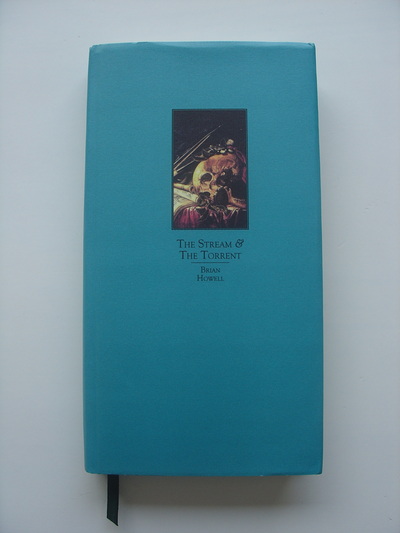
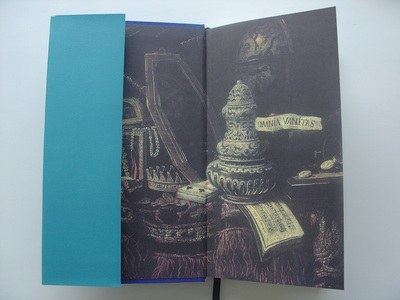
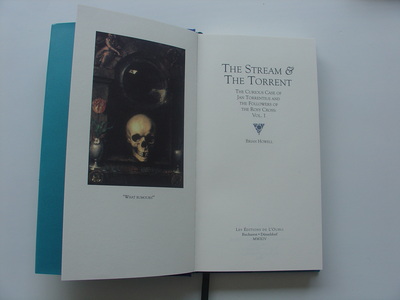
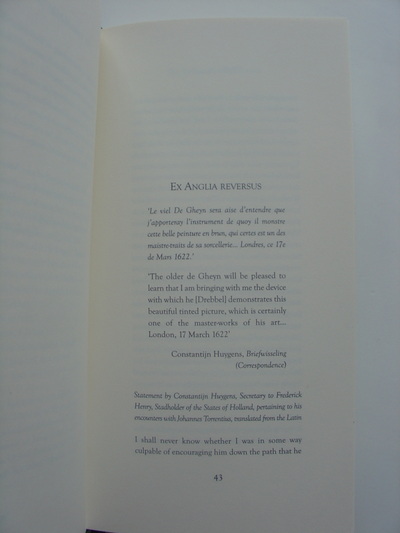
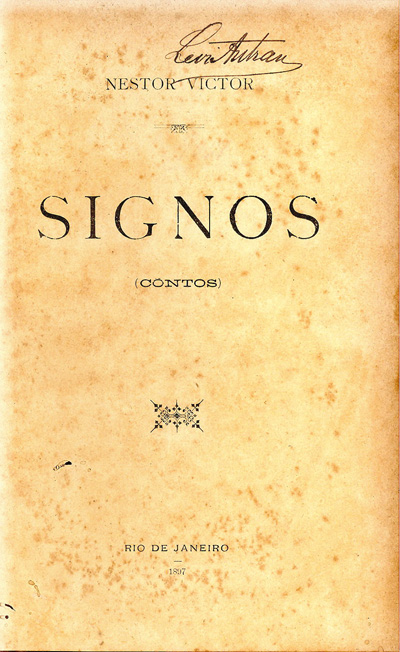
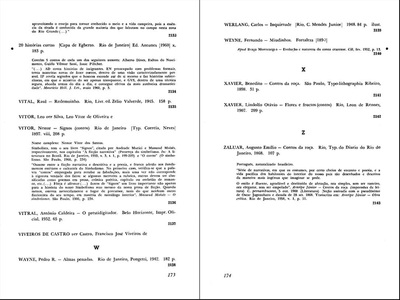
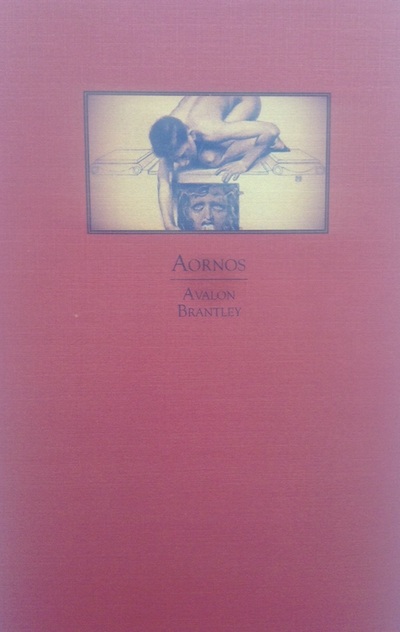
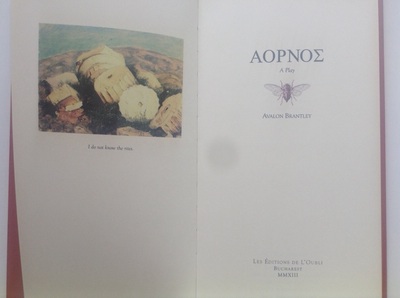
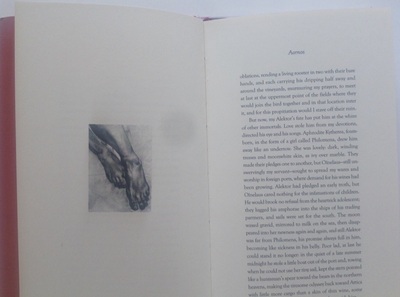
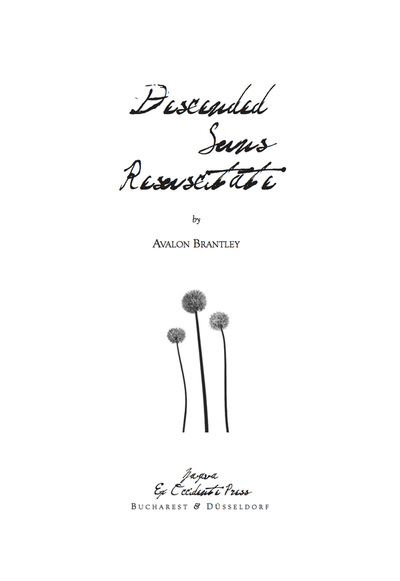
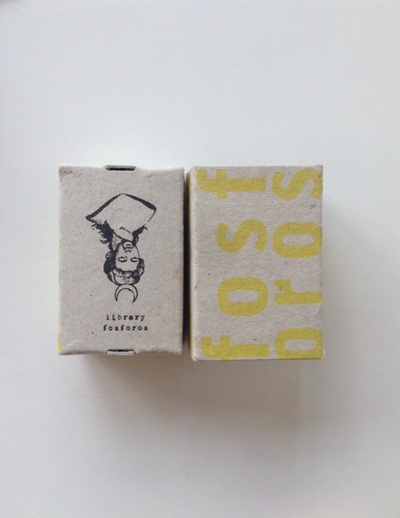
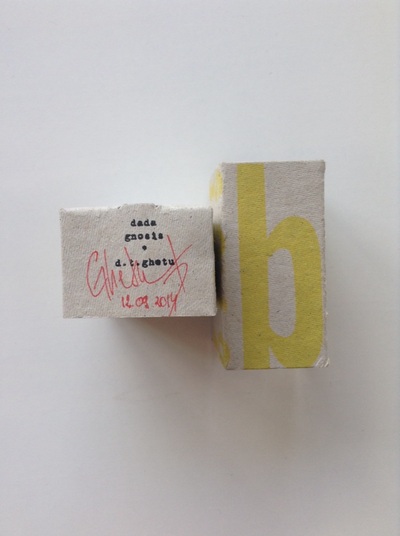
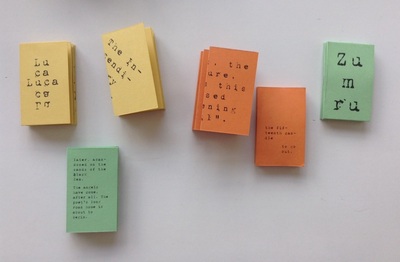
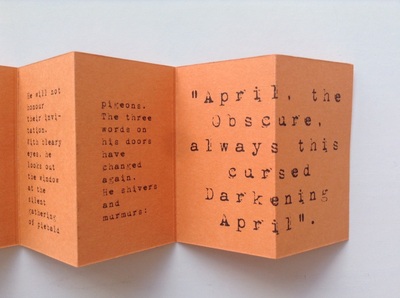
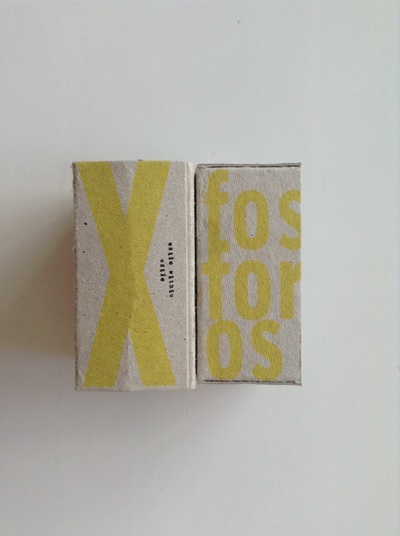
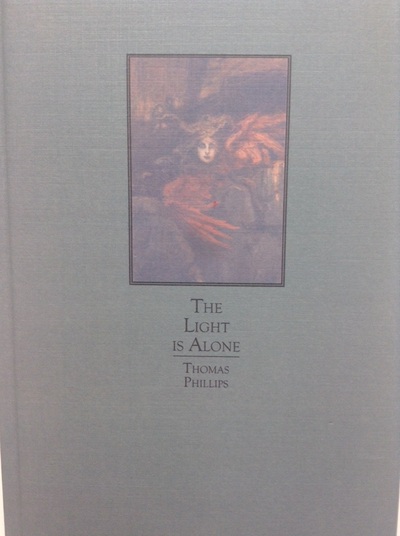
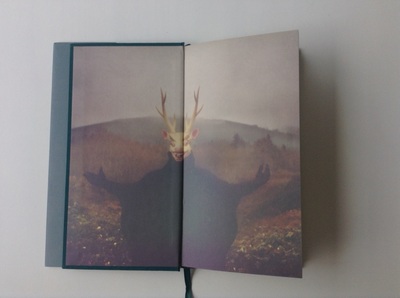
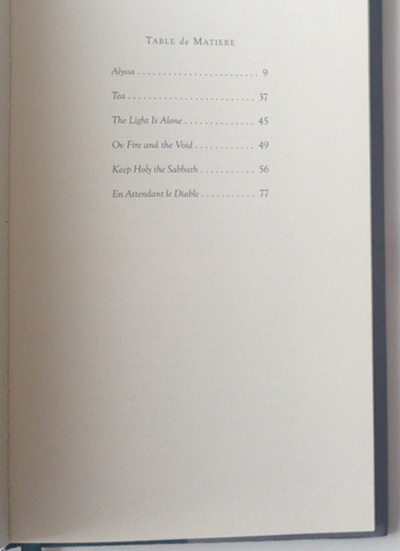
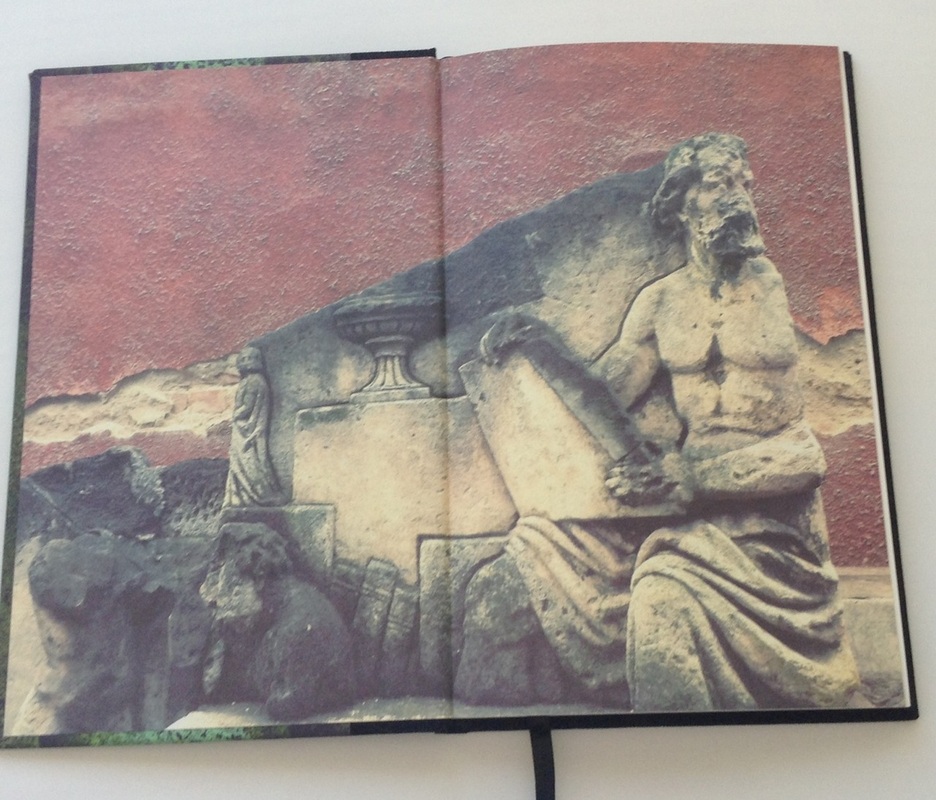
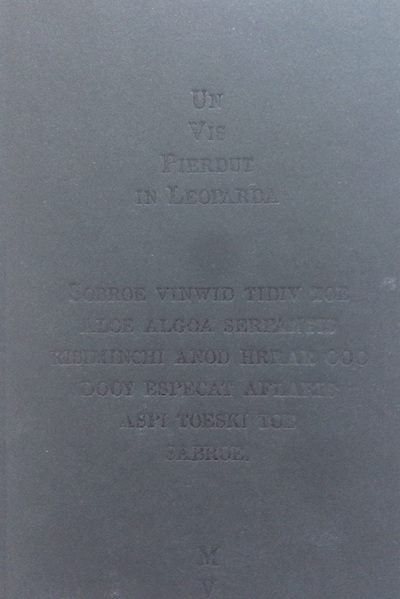
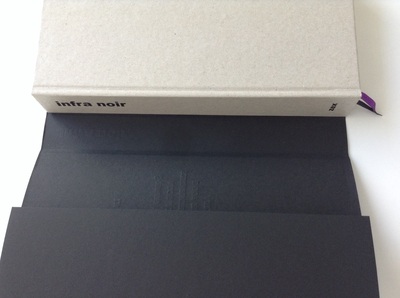
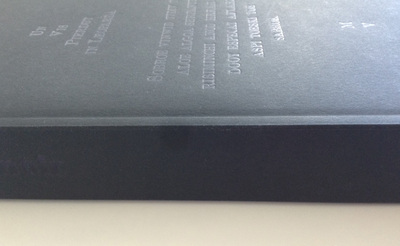
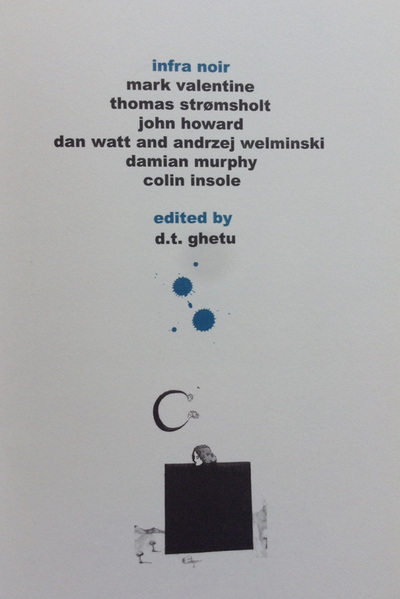
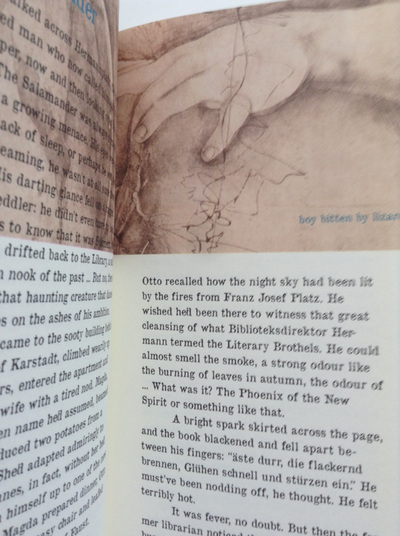
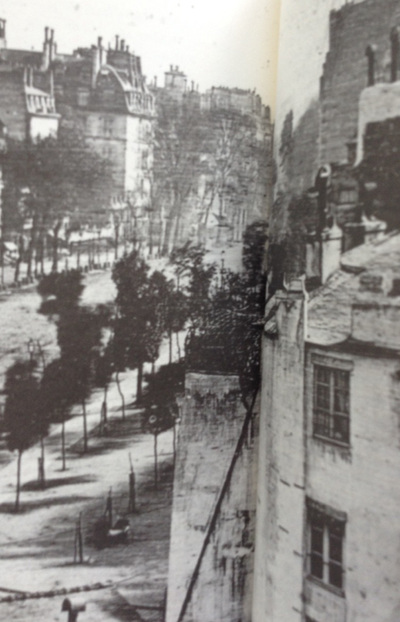
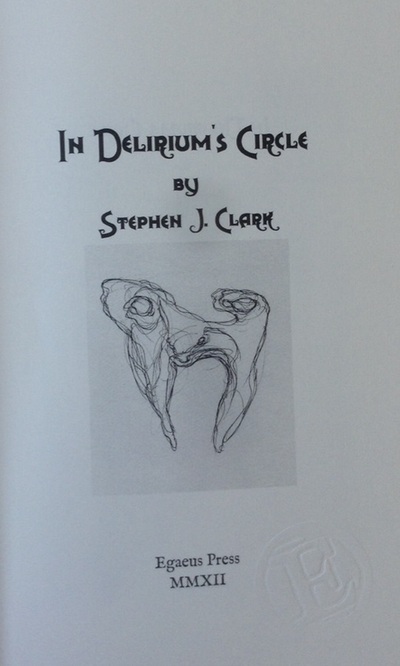
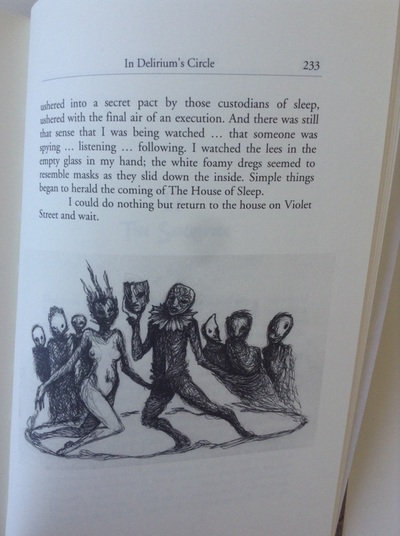
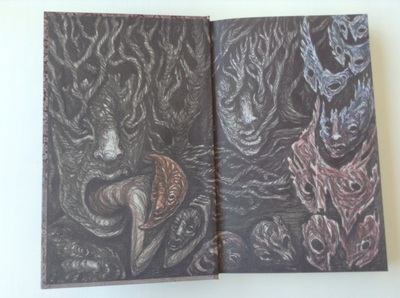
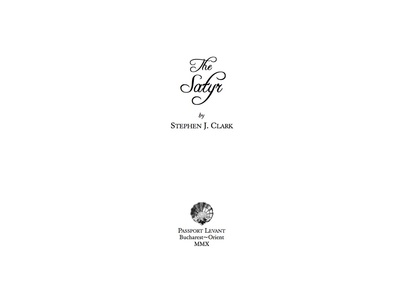
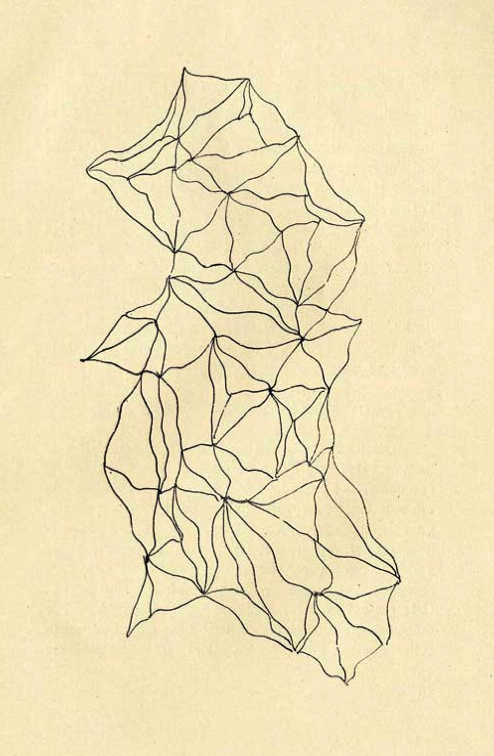
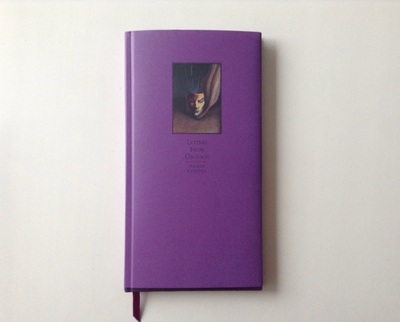
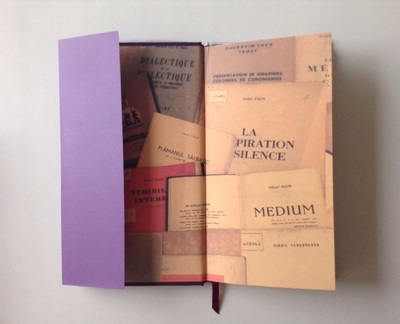
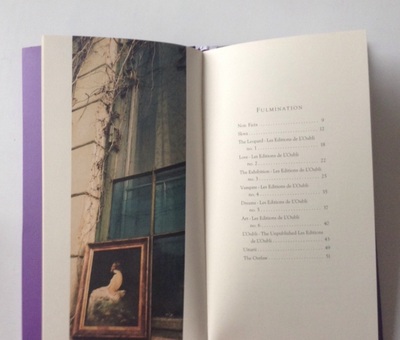
 RSS Feed
RSS Feed
